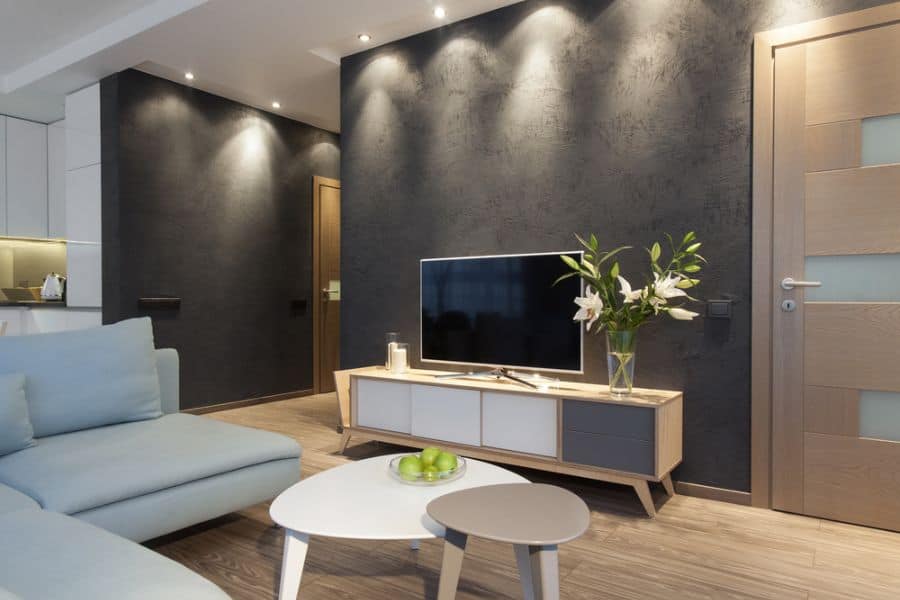
118 Small Living Room Ideas
In the ever-evolving landscape of interior design, the challenge of making the most of a limited space has become an art form in itself. Small living rooms, often the heart of our homes, demand creativity and innovation to transform them into cozy, functional sanctuaries. In this exploration of compact living, we delve deep into a world brimming with ingenious small living room ideas that will redefine your perception of spatial limitations.
From multifunctional furniture that seamlessly blends form and function to clever color palettes that open up the room visually, we’ll unveil a treasure trove of strategies to maximize every square inch. Join us on a journey where ingenuity meets aesthetics, and discover how thoughtful arrangement, strategic lighting, and smart storage solutions can breathe new life into your petite living spaces.
In this article, we’ll navigate the intricacies of small living room design, providing you with a toolkit of concepts and techniques to craft a harmonious and inviting ambiance. So, if you’re ready to unlock the potential of your compact living room, let’s embark on this transformative adventure together. Your small space is about to become a testament to the power of innovative design—where size matters less and style reigns supreme.
See more about - 68 Living Room Decor Ideas
Table of Contents
1. Small Living Room Ideas for Apartments
Even one or two-bedroom apartments can have living rooms that are a struggle to decorate. If you’re exasperated by limited floor space, turn your focus to vertical space. Things like floating shelves and wall-mounted lighting add character to your small living room. But they also serve a purpose. A DIY wall rack for your plants or a set of shelves displaying your vinyl collection allows you to disguise storage as decor.
One trick to make the room appear taller is to hang curtains near the ceiling instead of right above the window. This draws the eye upward, making the window seem much larger and more regal than it actually is. You can amplify this effect by using a curtain rod that extends further out to each side than the window.
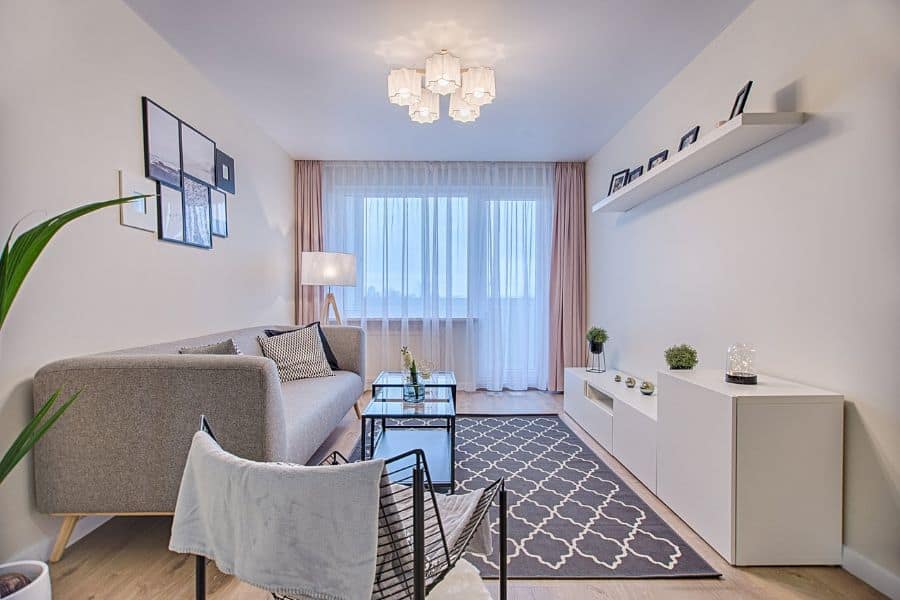
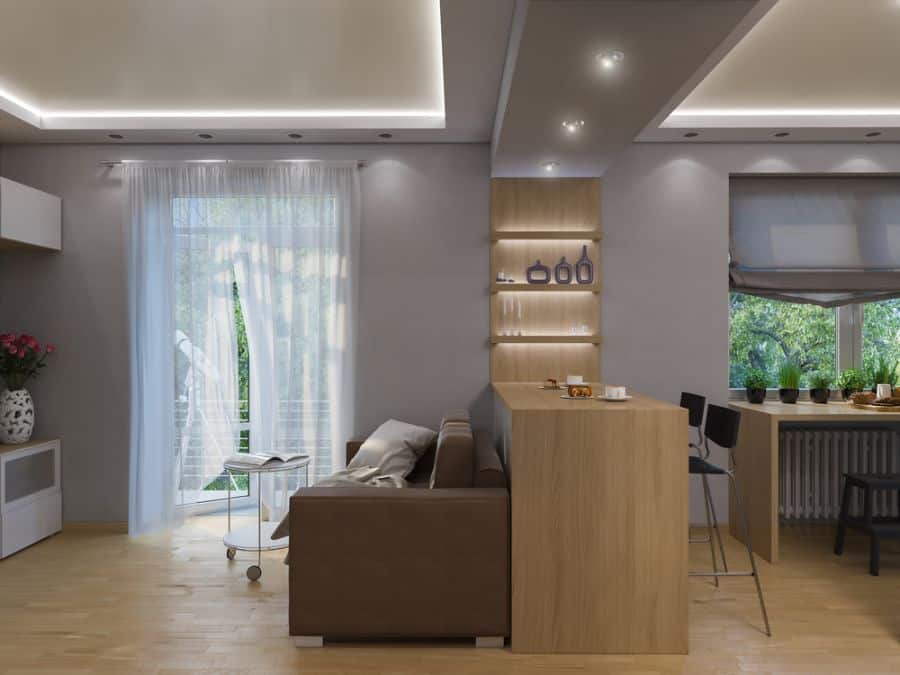
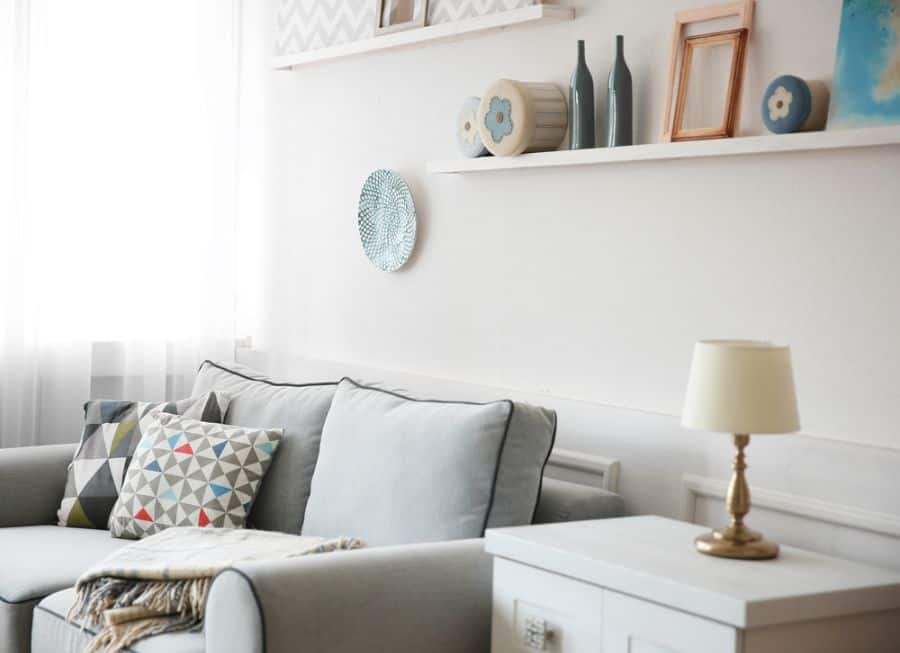
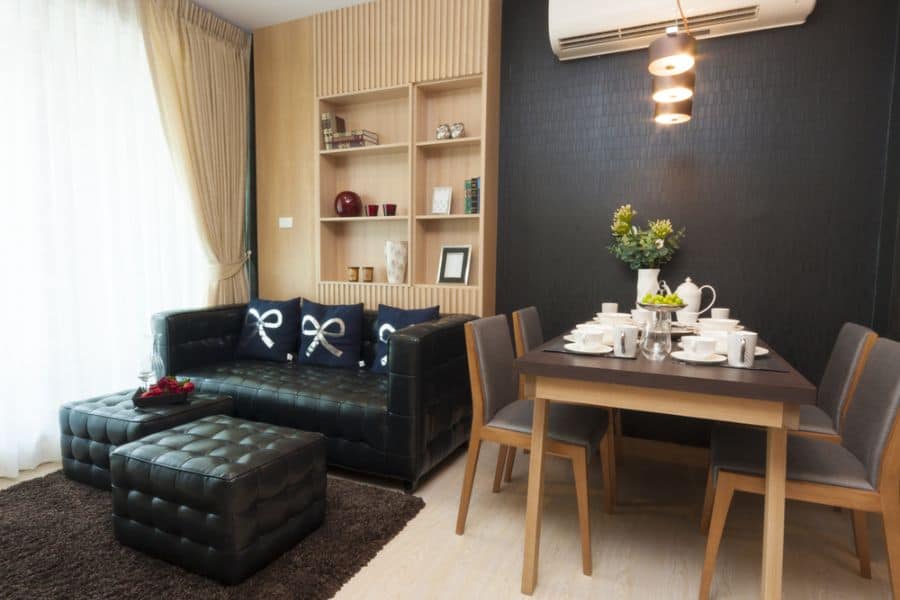
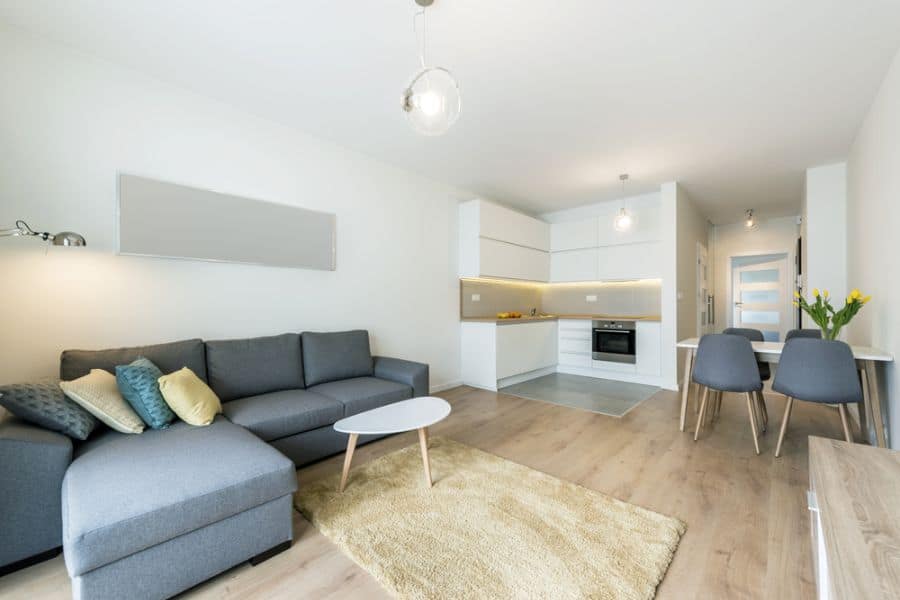
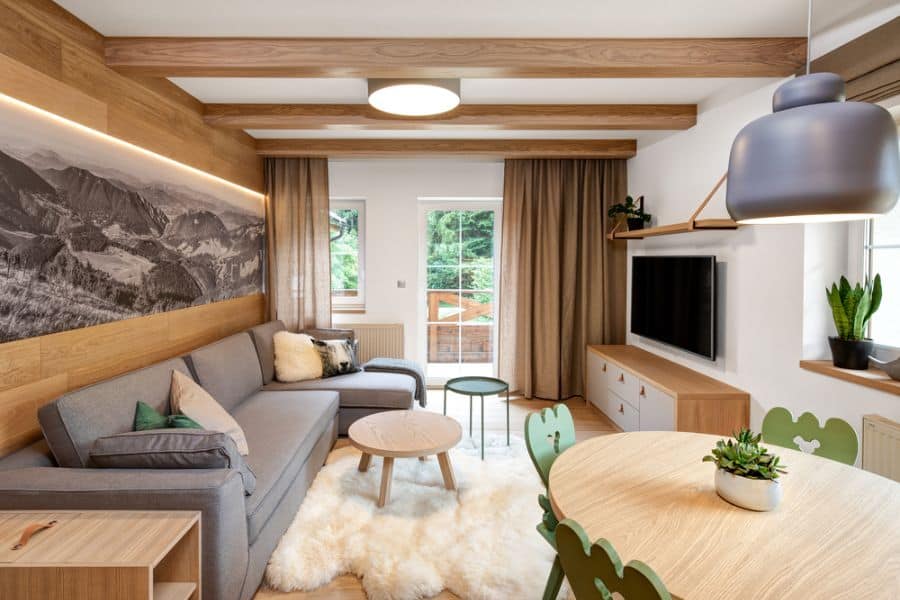
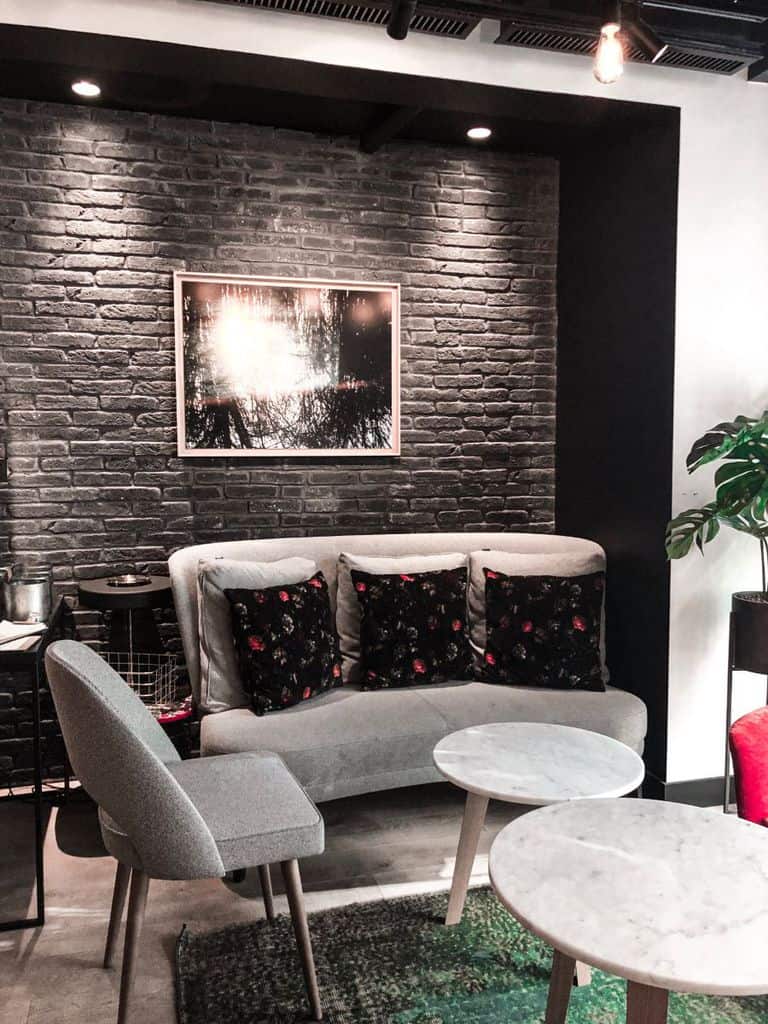



2. Enhancing Small Living Spaces With Dark Interiors
If you have your sights set on a dark, moody interior, there’s no reason for a lack of space to get in your way. Opt for matte paint, which blurs the corners of the walls and makes the space appear larger. Paint big pieces like bookcases and built-in shelves the same color so they blend, while purchasing other decor that contrasts. Pale sofas and artwork break up the darkness and direct the eye around the room.
If you want to go full monochromatic with a rich navy or a charcoal gray, make the most of your natural light. Leave your windows uncovered and hang a mirror on the opposite wall to amplify the light throughout the room. Having artificial lighting at various levels—a ceiling fixture and a table lamp, or a wall sconce and a floor lamp—can add warmth in the evening and help your living room feel cozy, not claustrophobic.
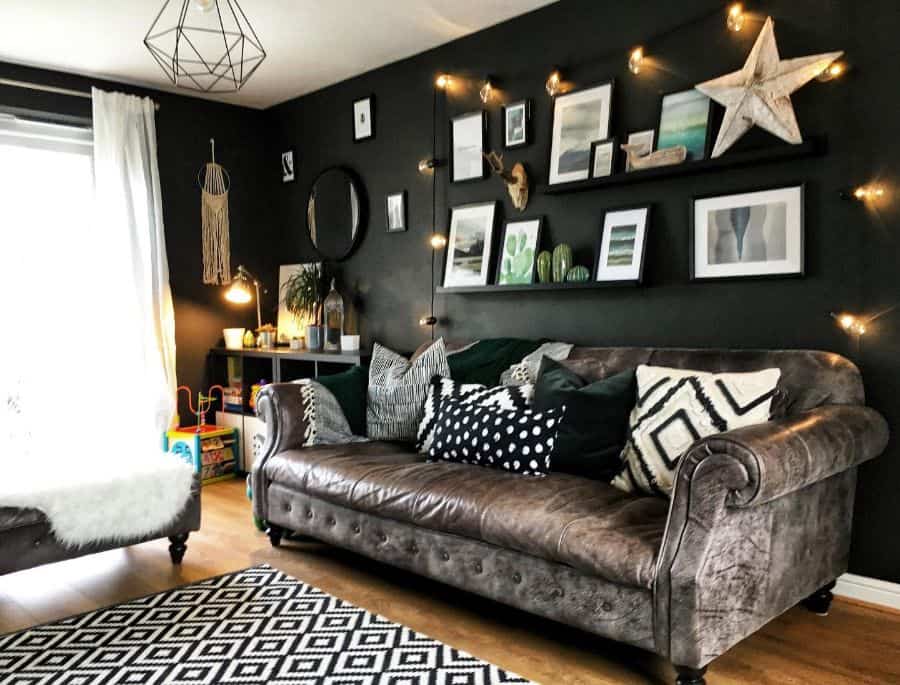
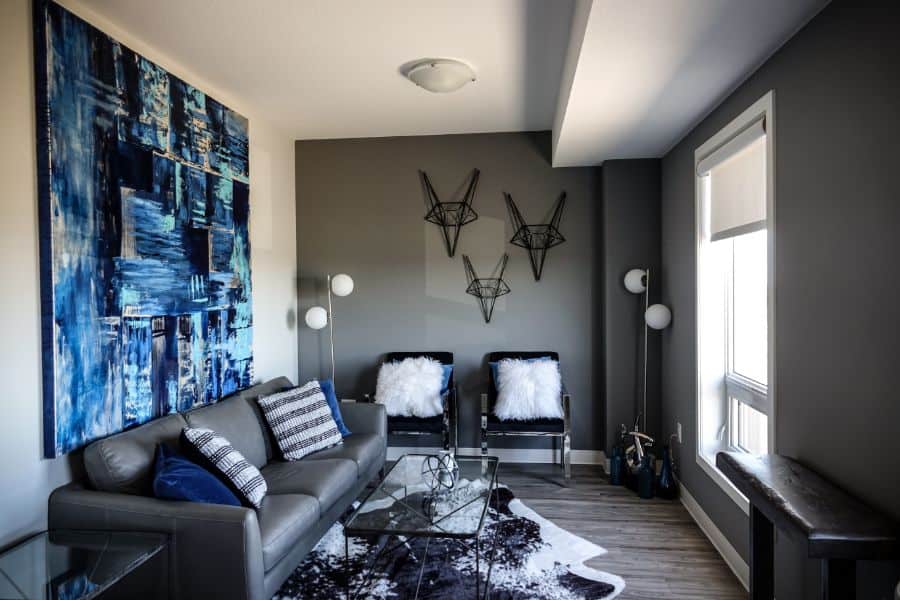

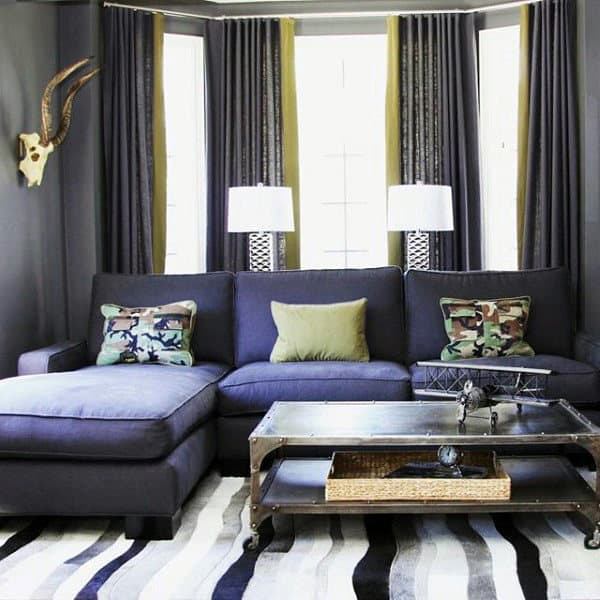
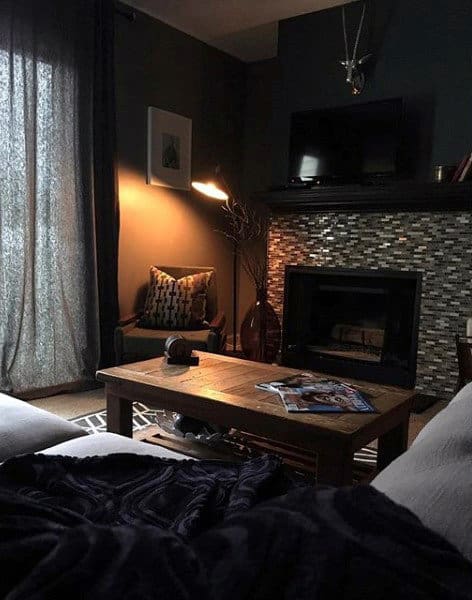
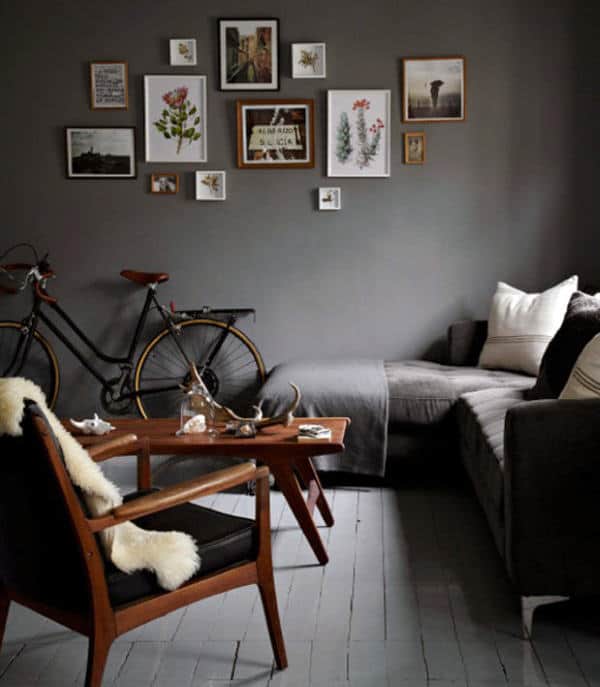
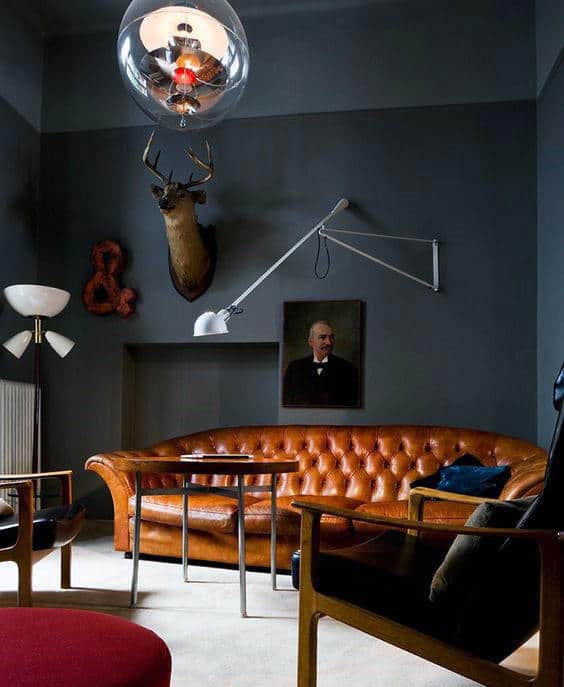
3. Rustic Farmhouse Charm
Farmhouse decor creates a cozy, rustic atmosphere. Unsurprisingly, it features elements from a farmhouse: wooden crates, barn doors, shuttered windows, and so on. Look for an antique wooden chest or a few sturdy crates to serve as a coffee table and side tables. Being smaller than most full-sized tables, they’ll fit in nicely and won’t overwhelm the space.
To accent your living room, look for tall, feathery plants like pampas grass, which is reminiscent of hay but a touch more sophisticated. However, any type of greenery can work in a farmhouse-style living room if it’s in an appropriate container. Look for wood boxes or jute baskets to set a nursery pot in, or see if you can find an old-timey pot or can that you could convert into a planter.

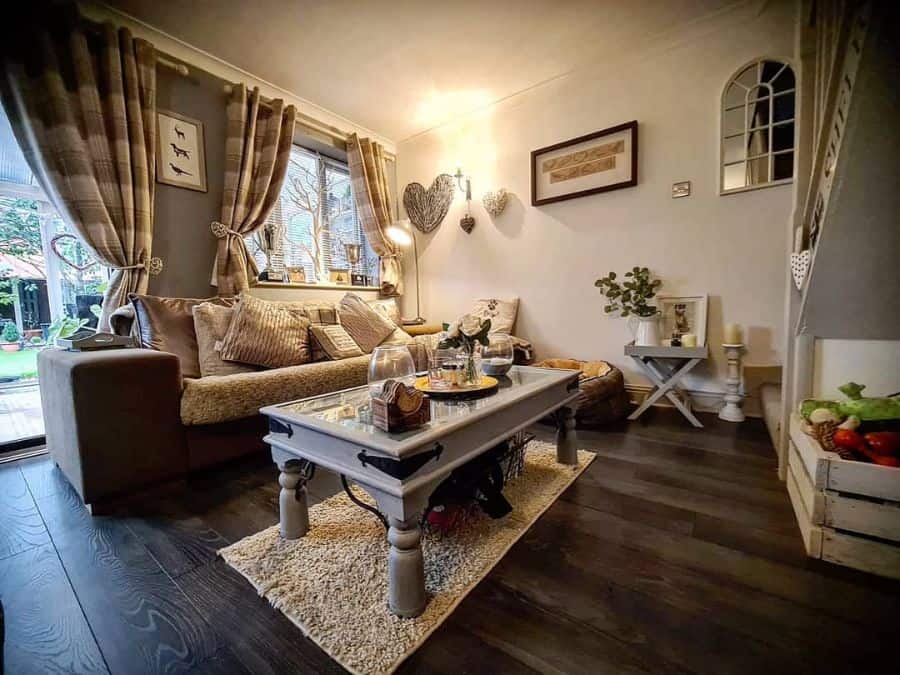


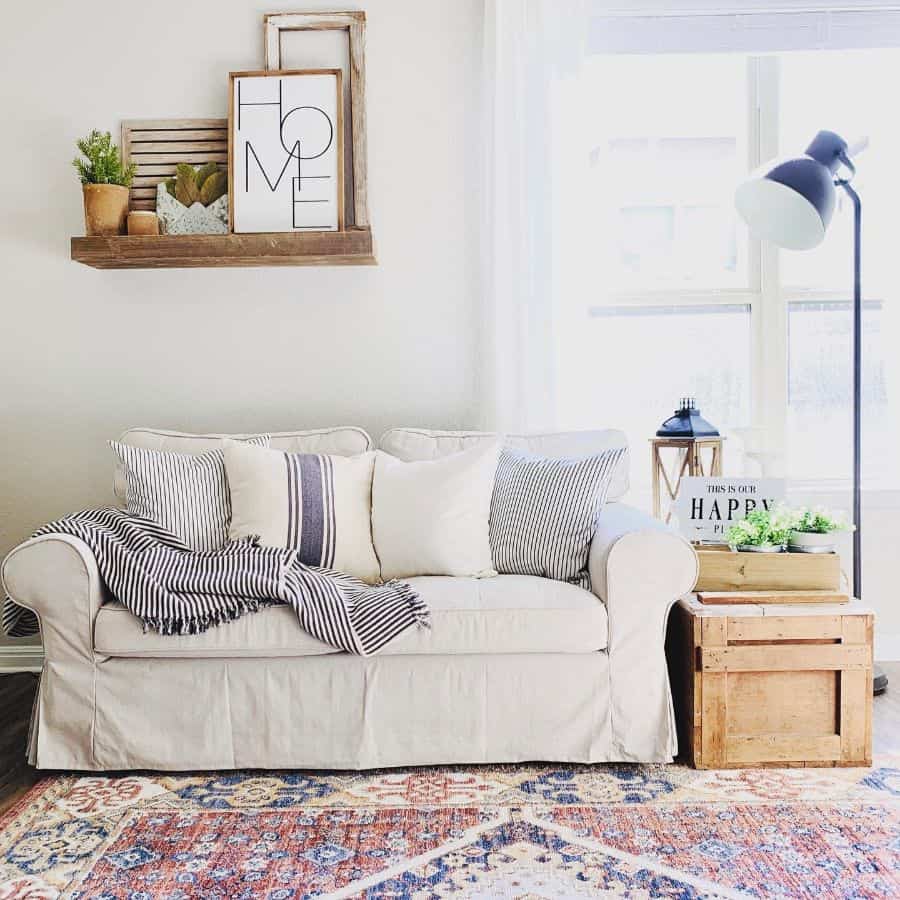
4. Elevate Your Space With a Feature Wall
A feature wall adds visual interest and serves as a stunning focal point in any small living room. Light-colored walls reflect natural light the best, but a single dark accent wall is a striking way to incorporate moodier hues. This wall can change the atmosphere dramatically. You could also accent with a patterned wallpaper that might be too overbearing for all four walls. Or, use a different material altogether like shiplap or tile.
Really, a feature wall can look however you’d like. Fill it with shelves to show off your growing plant collection, create a gallery wall, put up a huge chalkboard for friends to draw on, or hang woven tapestries you pick up on your travels. Just make sure the colors and themes of the wall don’t clash with the rest of the room.
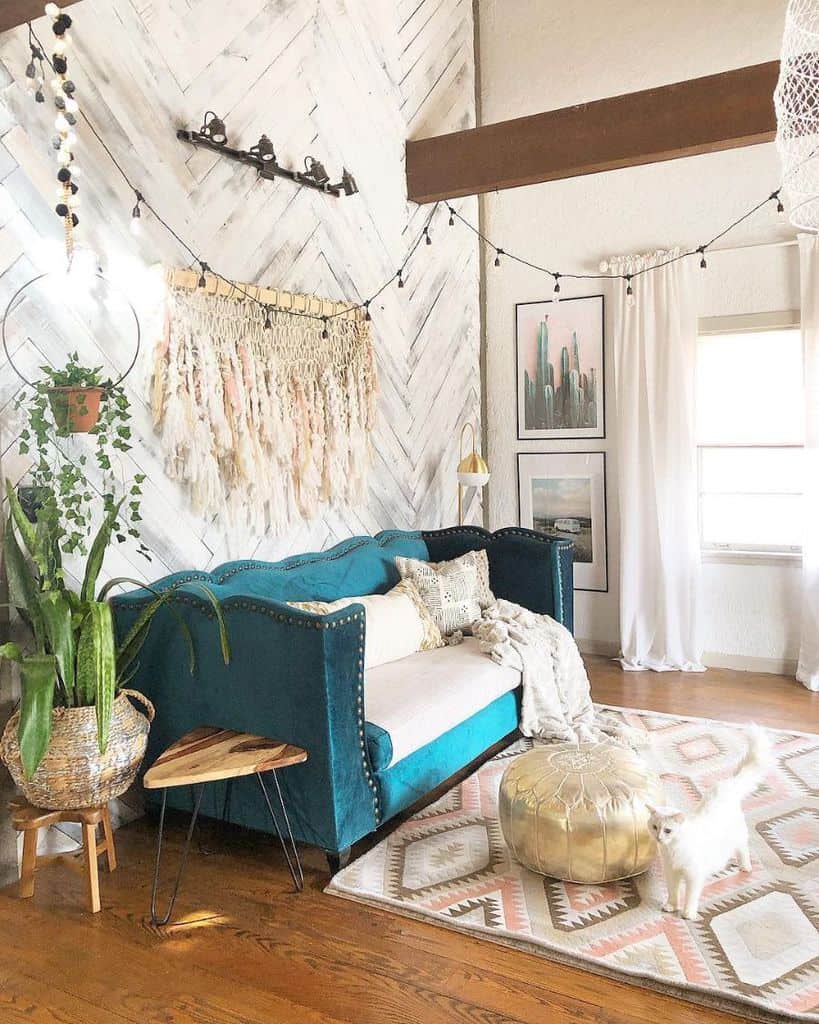
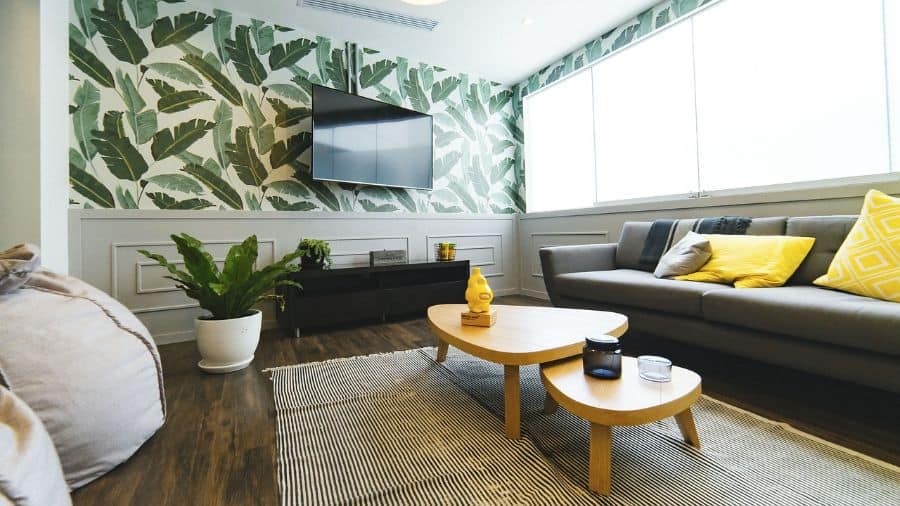
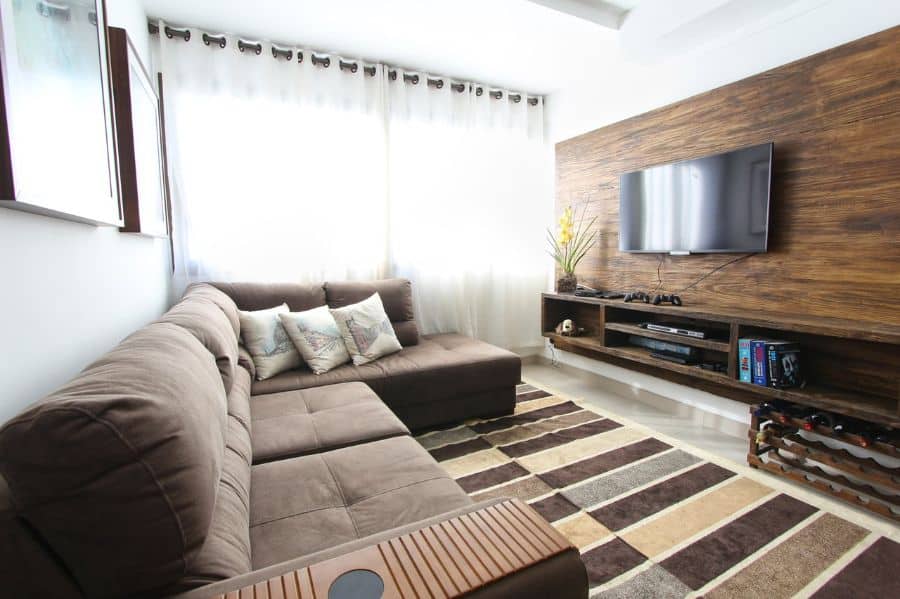
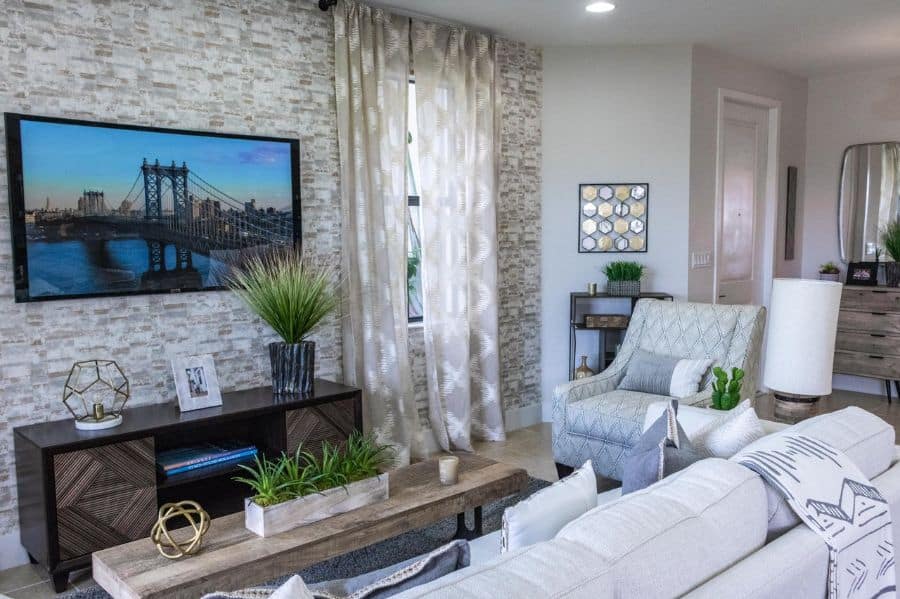
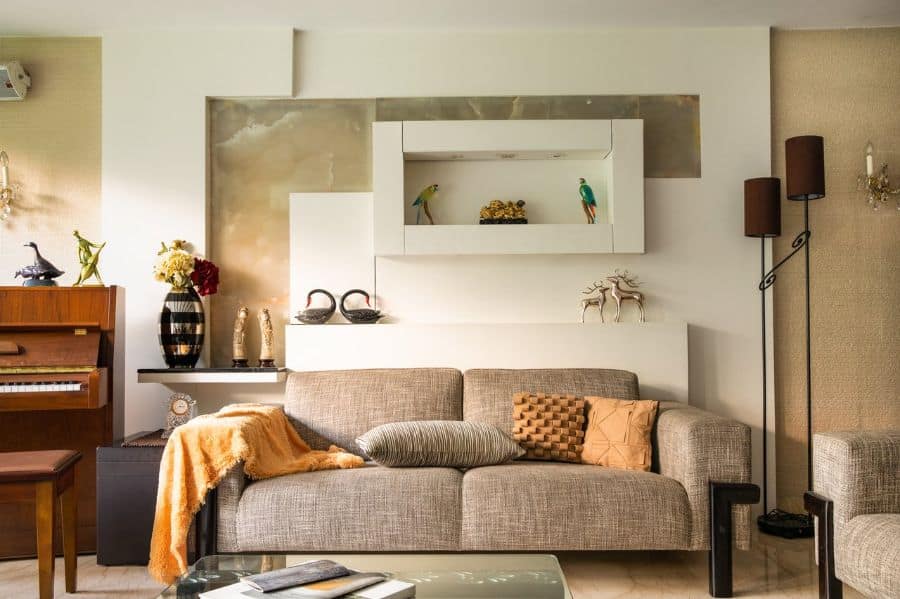
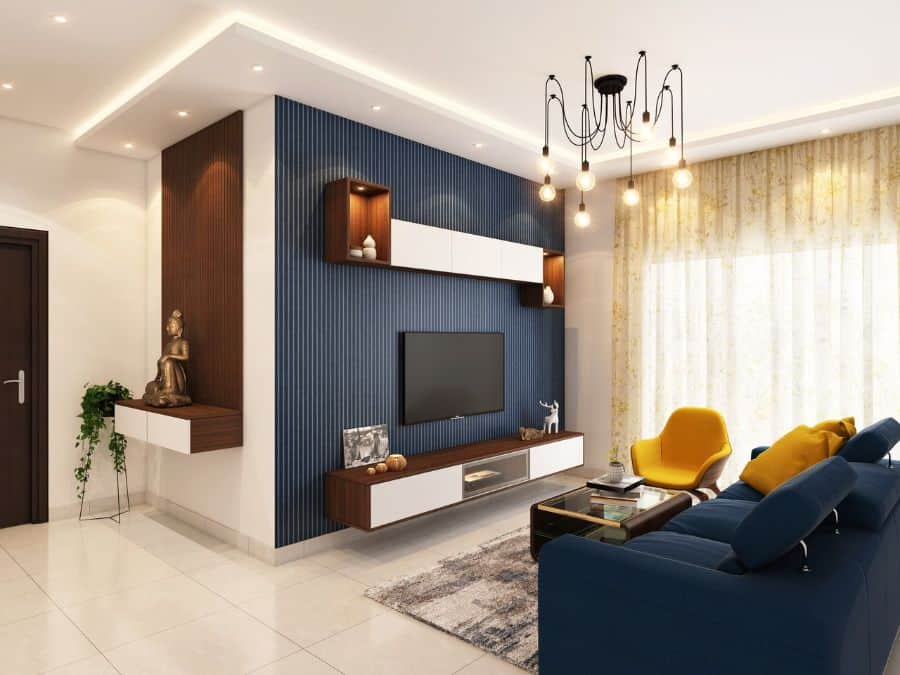
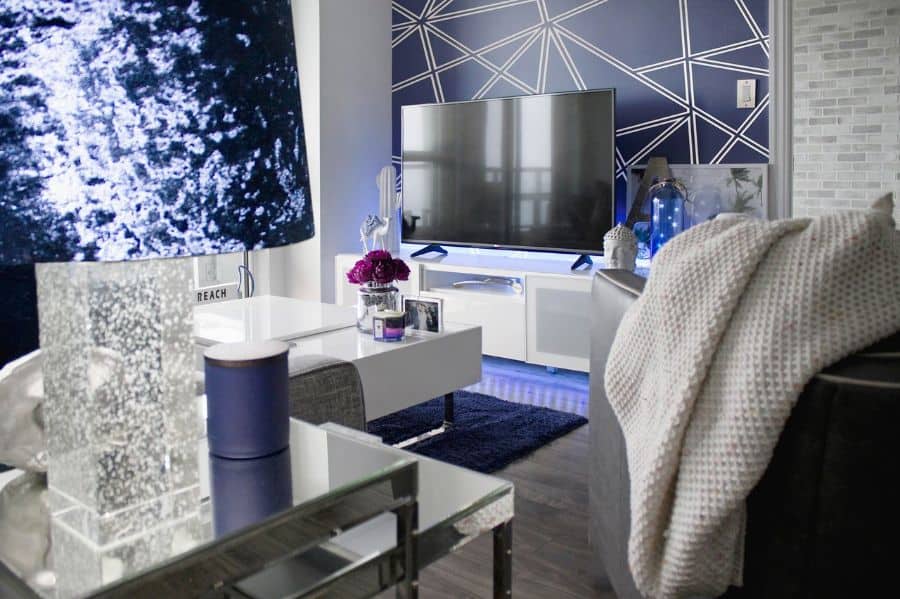
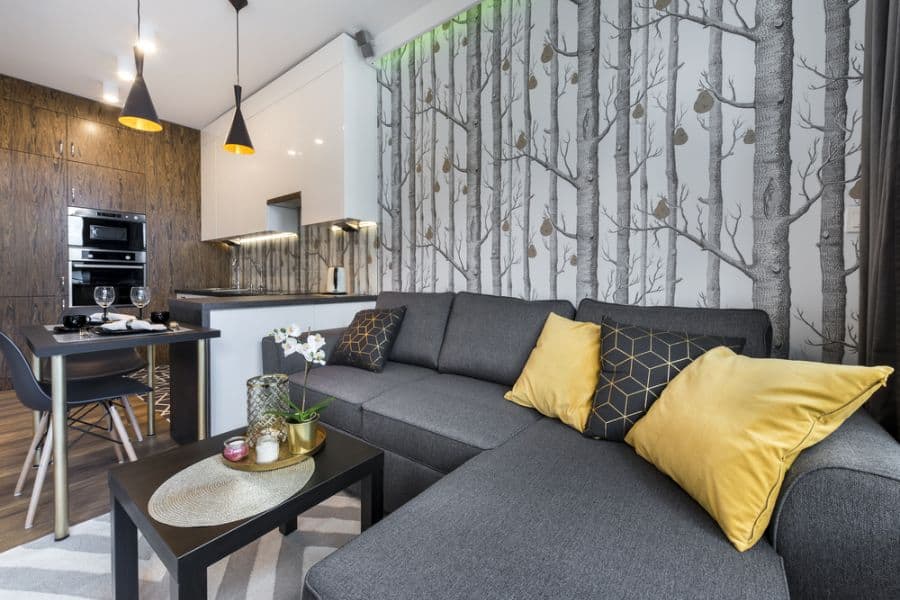
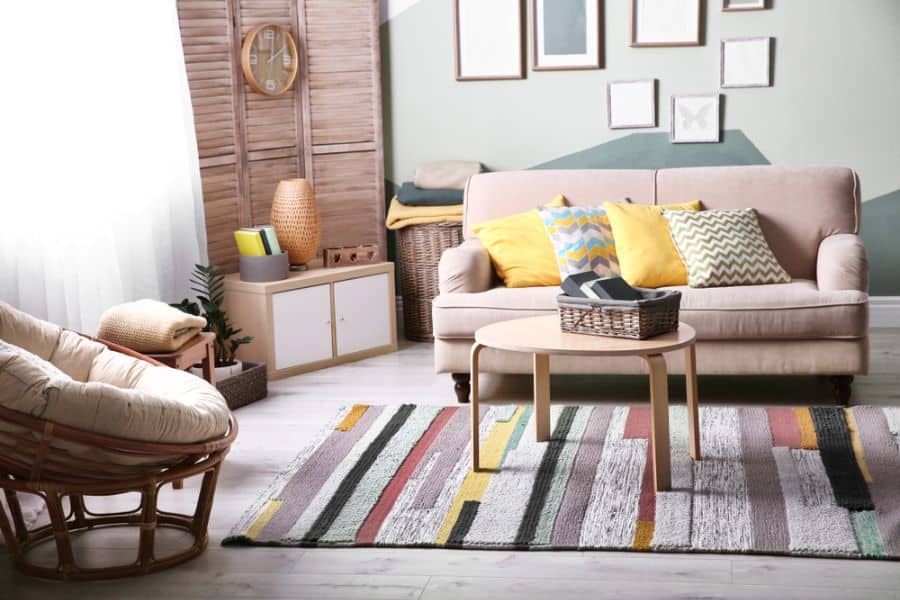
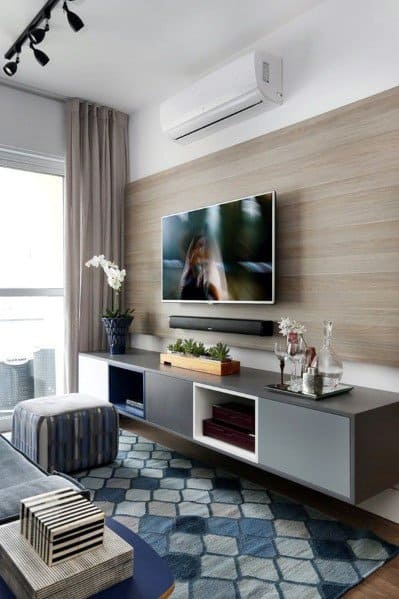
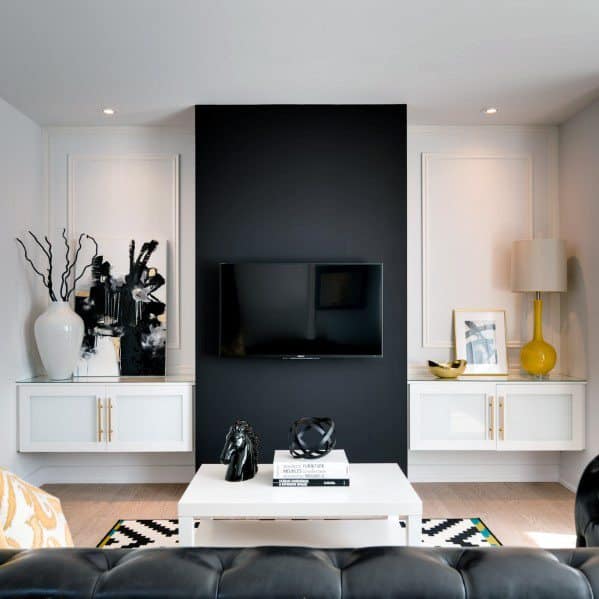
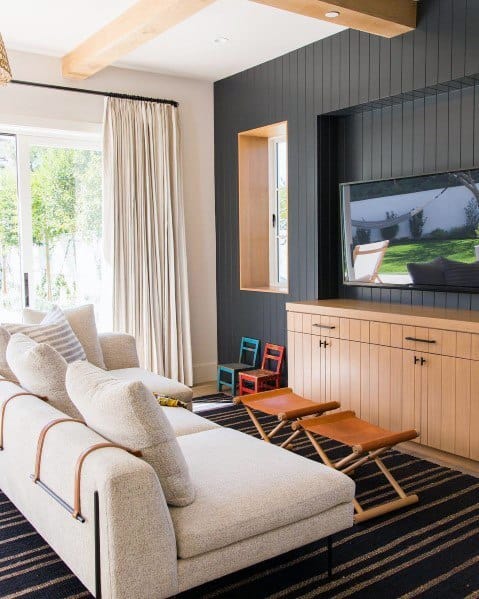
5. Smart Furniture Solutions
When you’re not working with a lot of space, every square foot counts. Look for furniture pieces that you can change, and don’t be afraid to think outside the box. A flat-topped ottoman can serve as a side table and slide out to provide additional seating. A trunk can be a chic coffee table and double as extra storage.
Since natural light is instrumental in opening a space, it’s essential to make the most of however much you have. A mirror hung on a wall will bounce the light around the room and make your space seem brighter. If you hang it on the wall opposite a window, it will reflect even more light. It will also reflect the outdoors, which can have a significant calming effect on the atmosphere of the room.
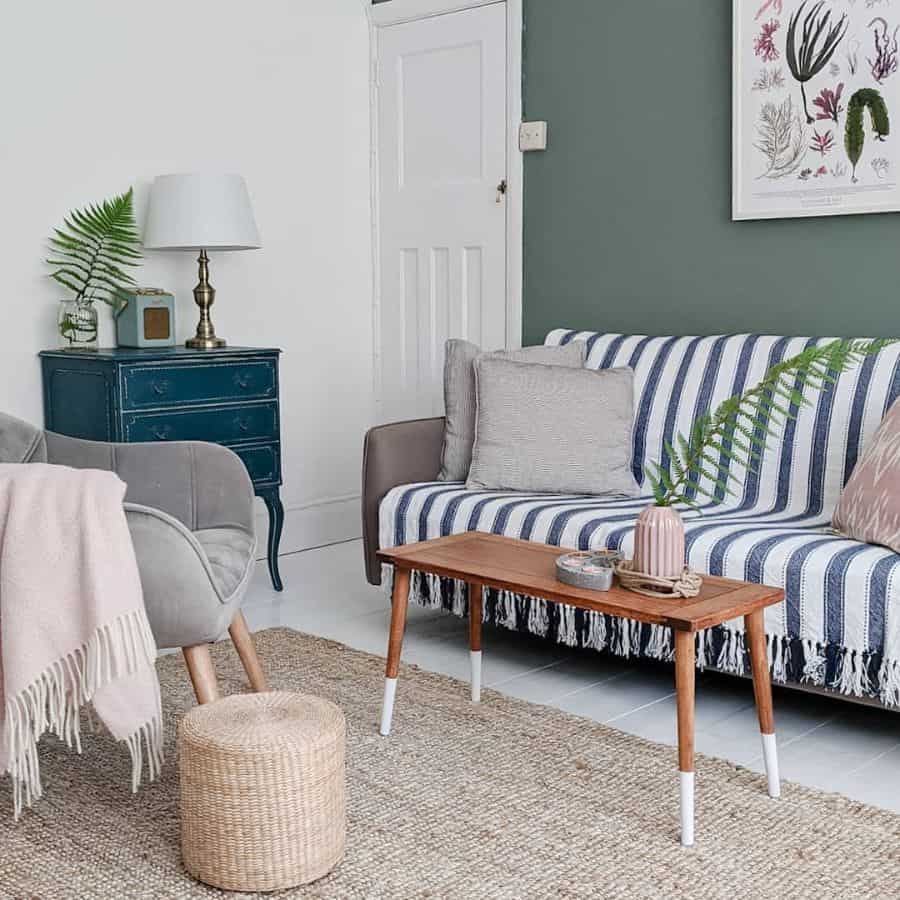
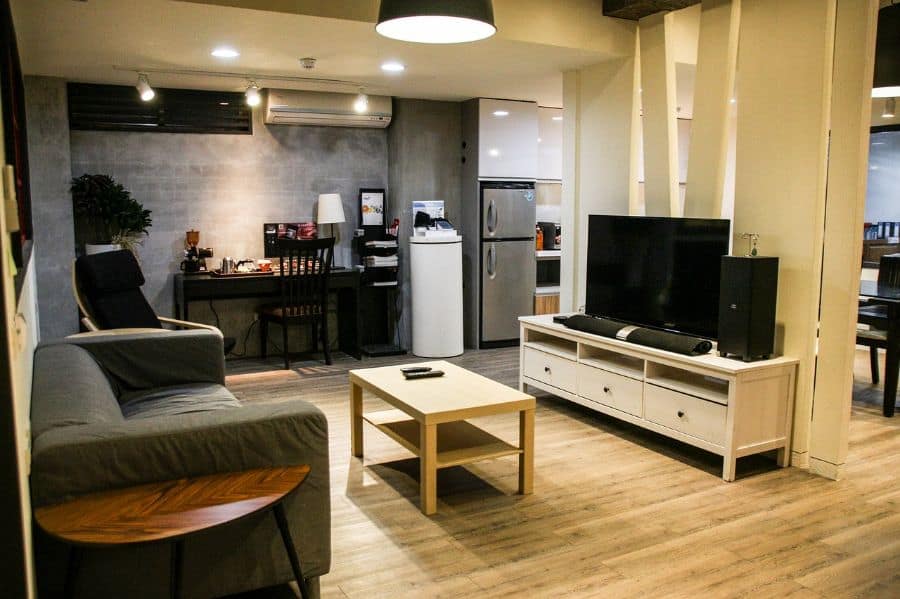
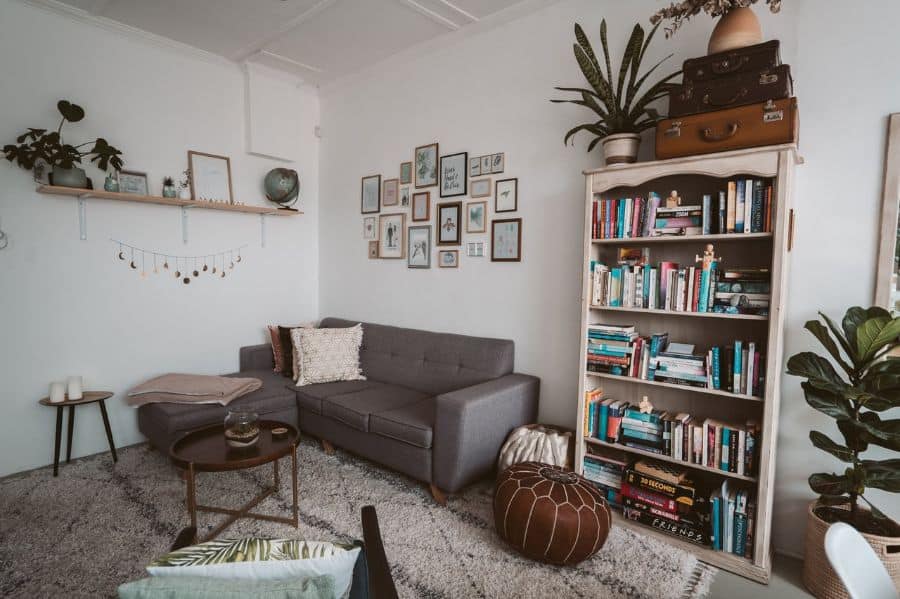
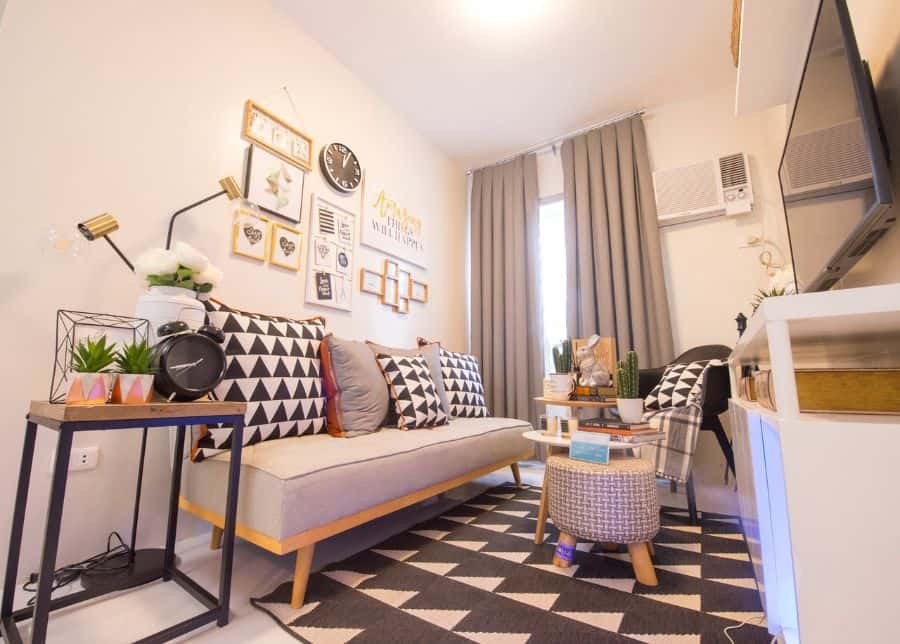


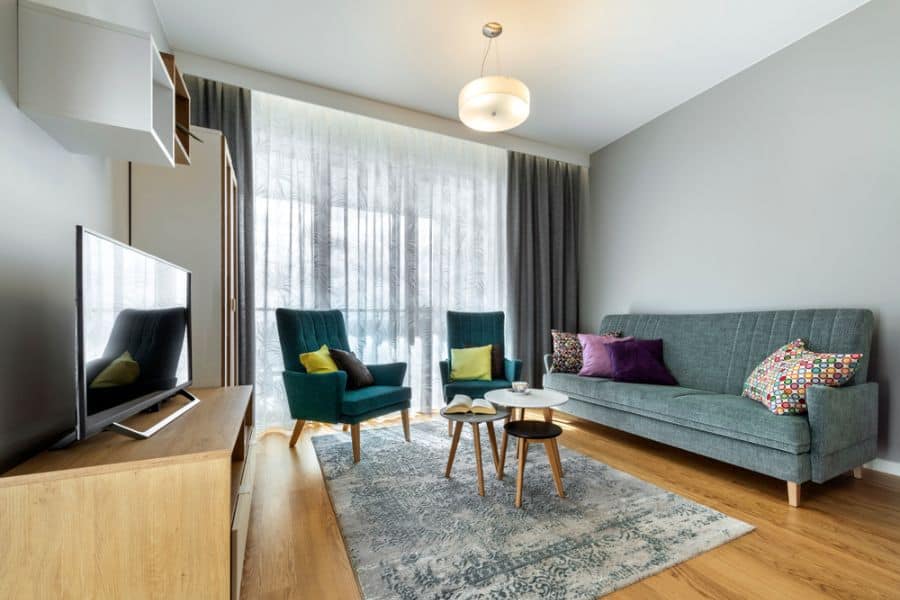
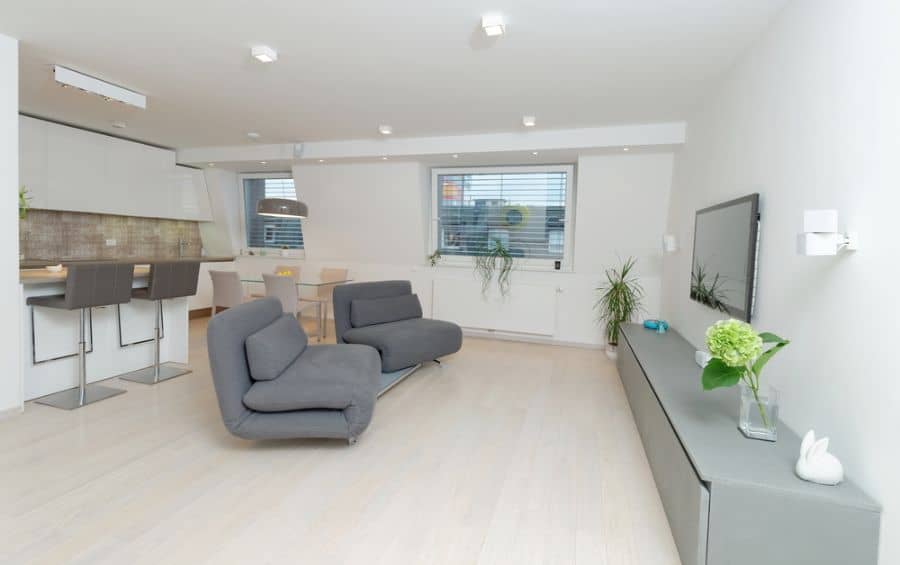

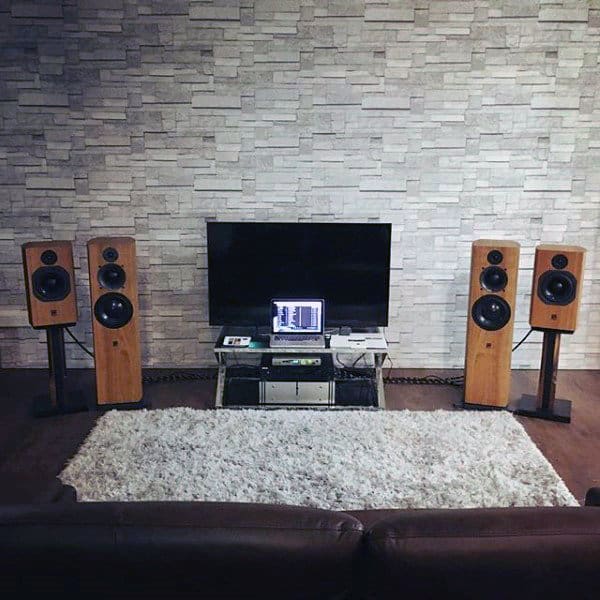
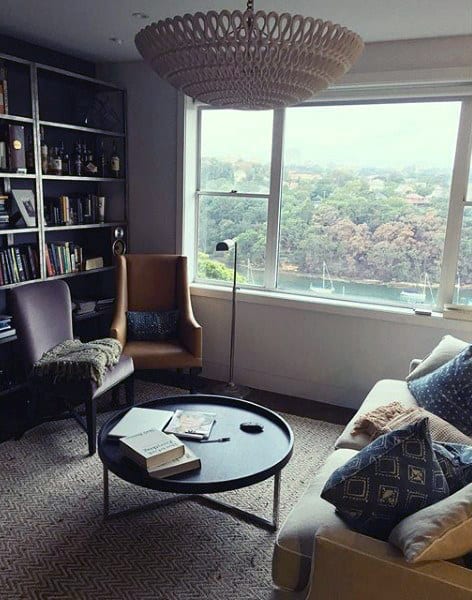
6. Embracing Industrial Chic Inspiration
The chosen style of hipsters everywhere, industrial decor takes its cues from factories and warehouses with architectural elements. These elements include metal pipes, raw wood, and exposed brick. You could play up the utilitarian, down-to-earth vibe with recycled objects like wooden pallets and other natural elements, like plants in stone pots. At the other end of the spectrum, you could lean into the sleek simplicity of the exposed pipes with sharp lines and metal accents throughout the space. Either way, look for simple furniture pieces in neutral colors and keep things minimal.
All this simplicity and neutrality don’t have to be boring! Look for textured pieces that could add interest to your living room without overwhelming it. Leather footstools, corduroy pillows, or a suede couch could all serve as unexpected focal pieces.
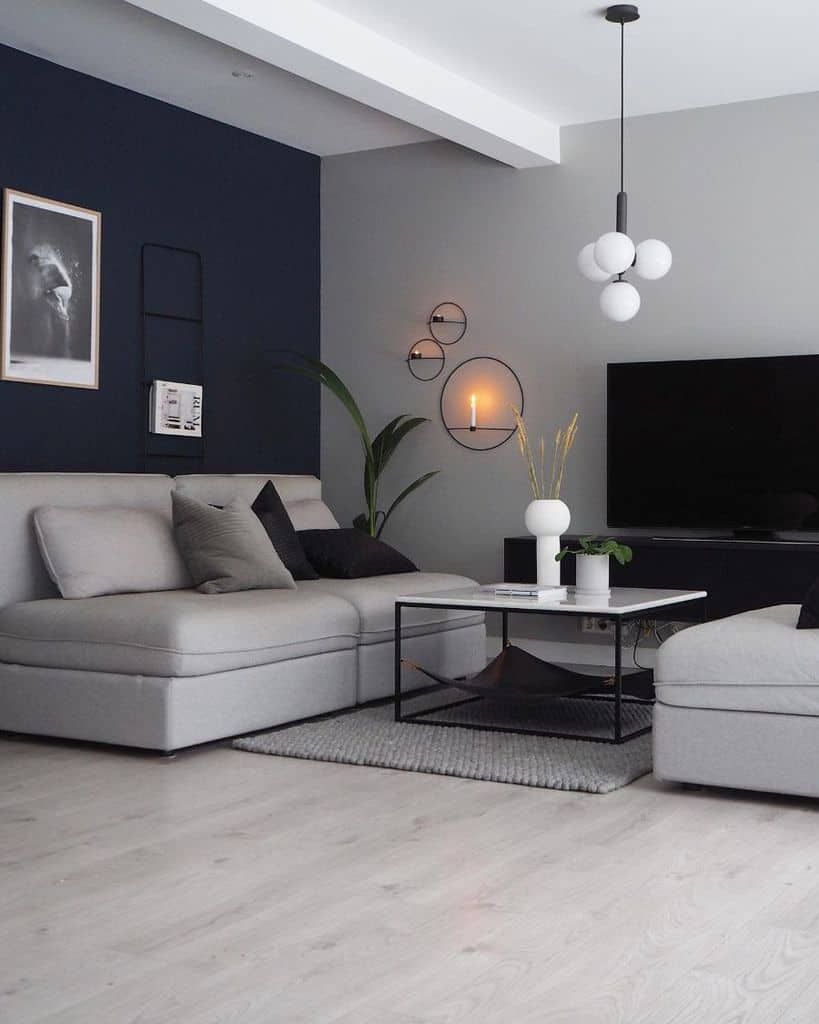
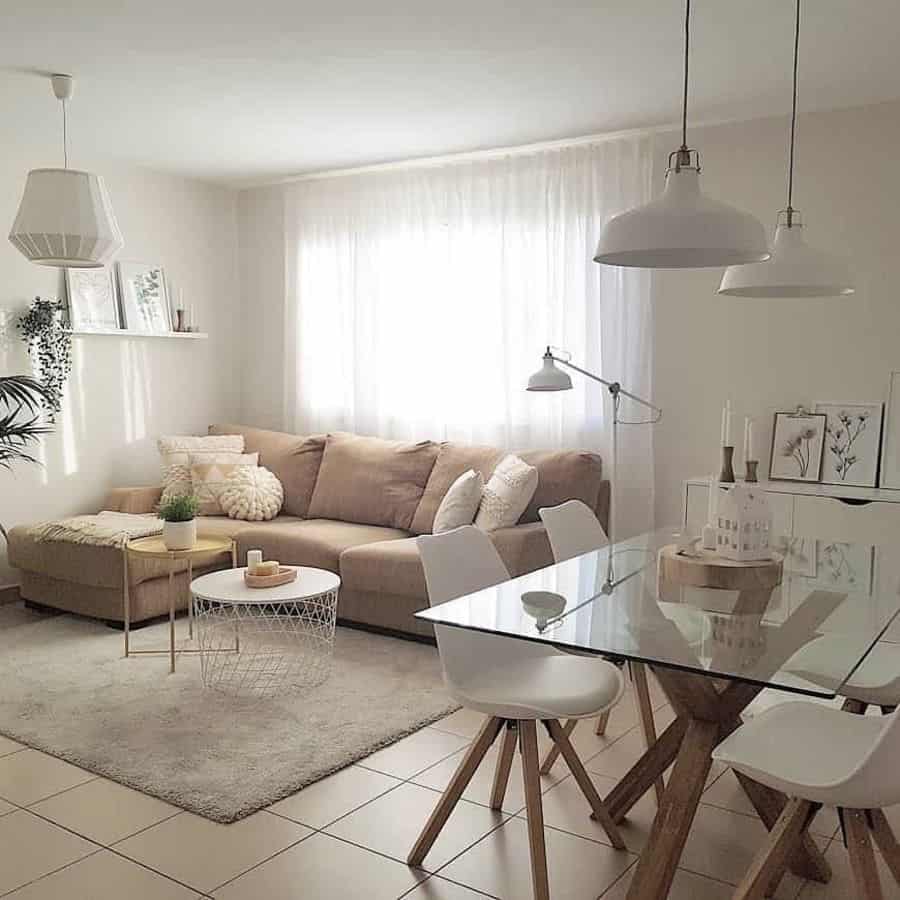
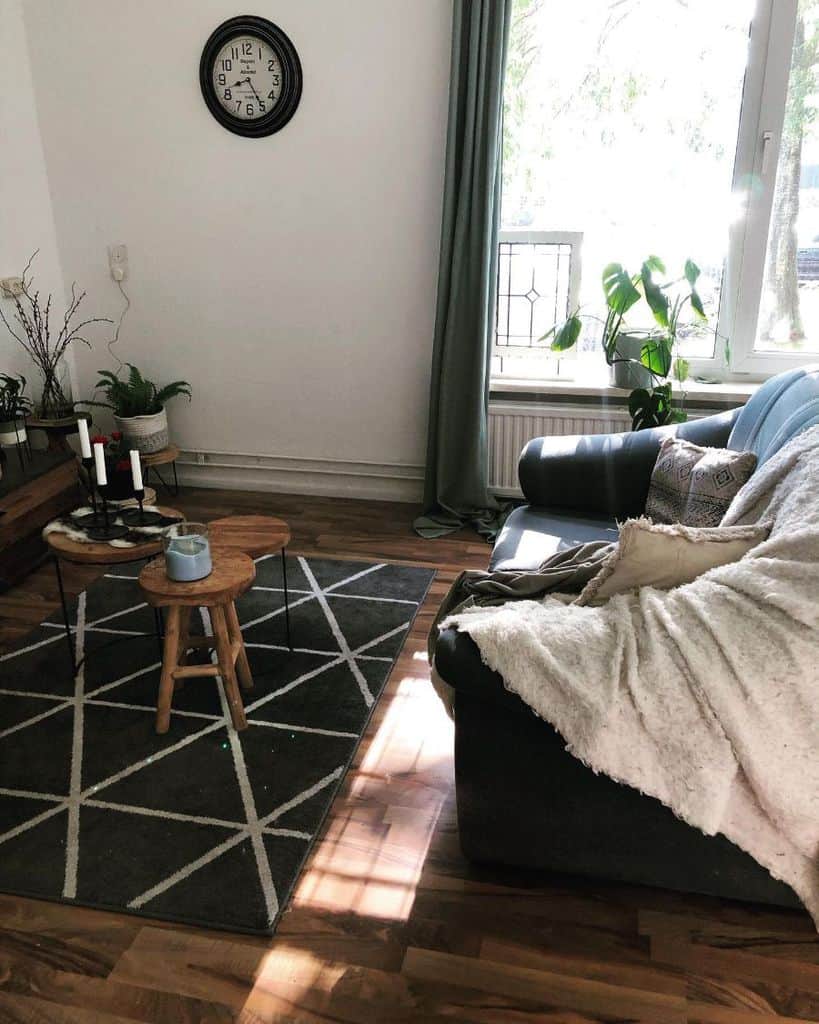

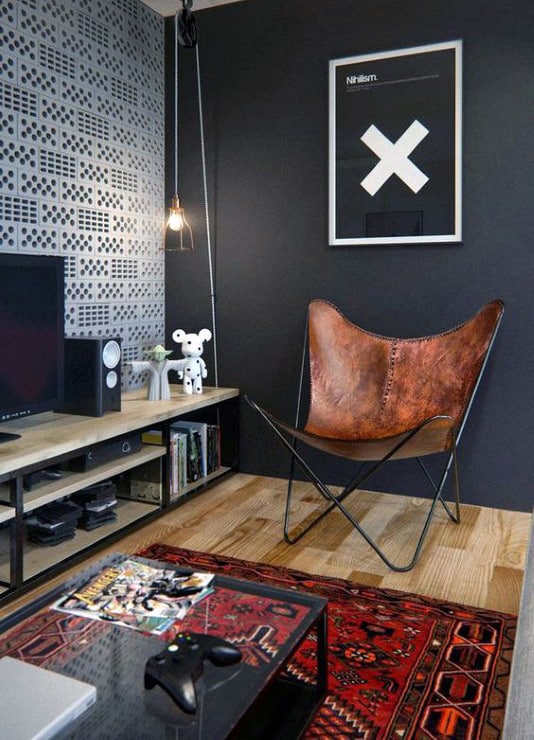
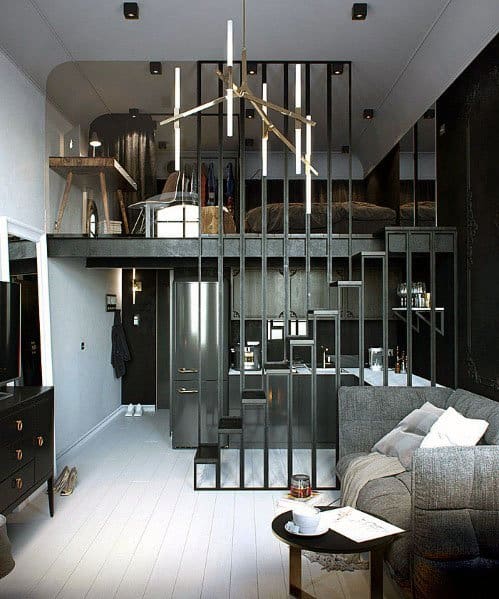
See more about - 81 Living Room Curtain Ideas
7. Simplicity in Style
Given that you can characterize minimalist decor by, well, minimizing your belongings, it’s a great option for decorating a small space. The word “minimalism” may conjure images of bleak white walls and distressingly bare surfaces, but all it means is an absence of unnecessary clutter. You should tuck all knickknacks away, except your favorites. Any necessary odds and ends—remotes, pens, chargers—should be out of sight.
There are some design rules you’ll want to follow so your minimalist living room looks intentional, not sparse. Arrange any decor you do leave out in groups of three, with all the items at varying heights. This is pleasing to the eye without looking overly styled. Smaller items, like pens or keys, look neater when collected in a dish or tray instead of strewn across the counter.
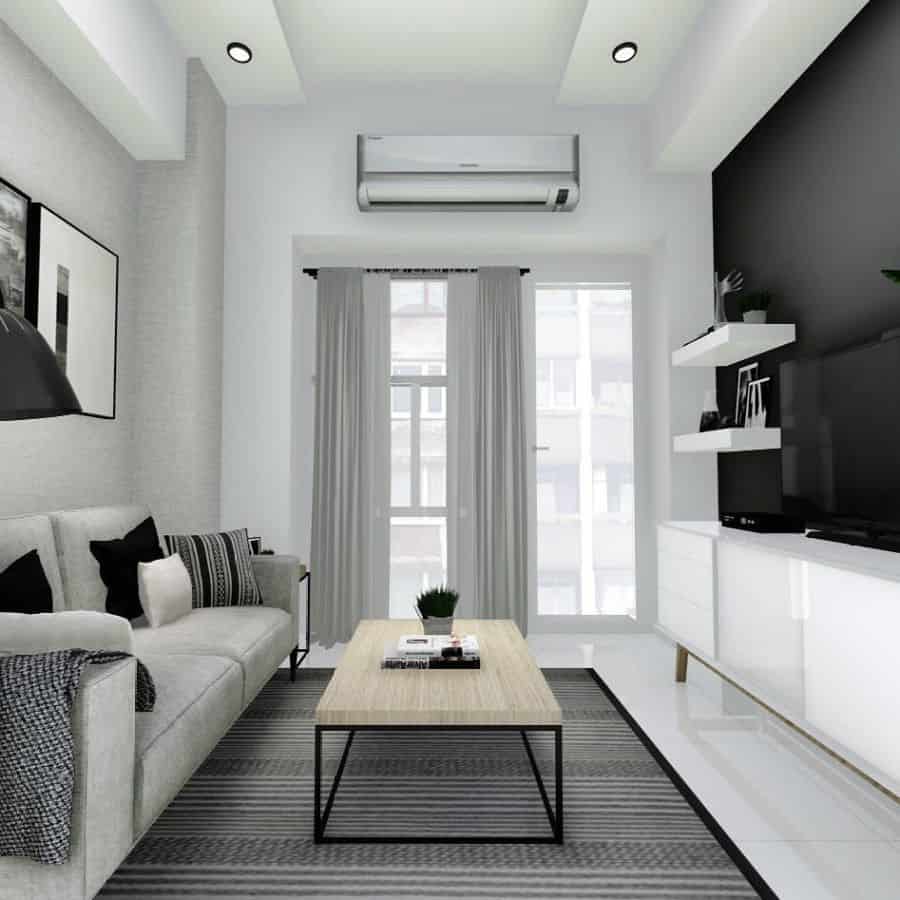
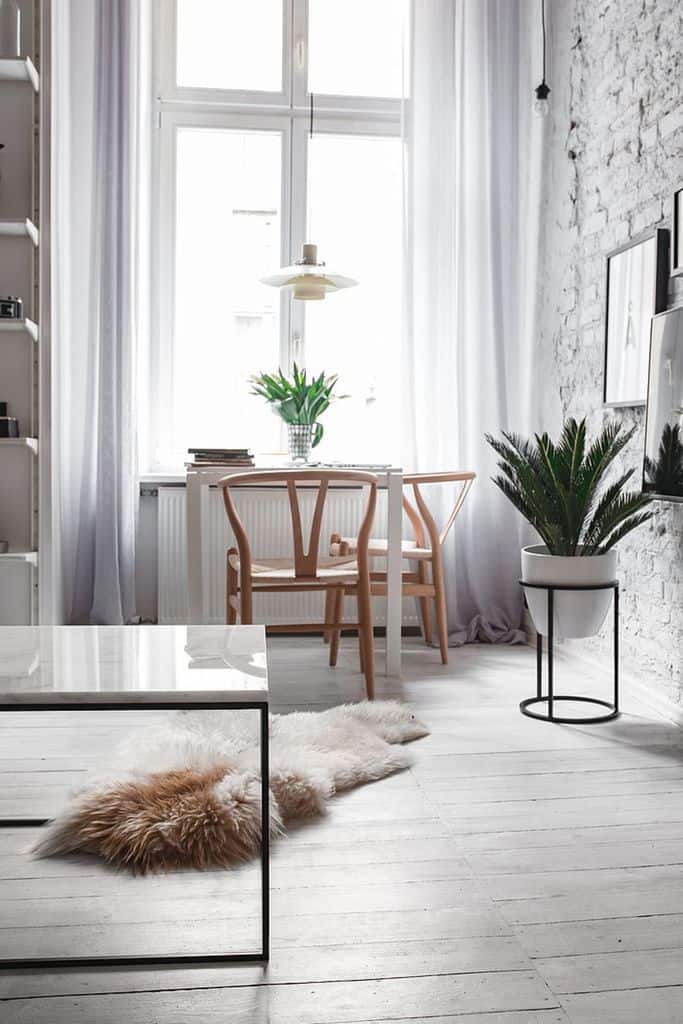
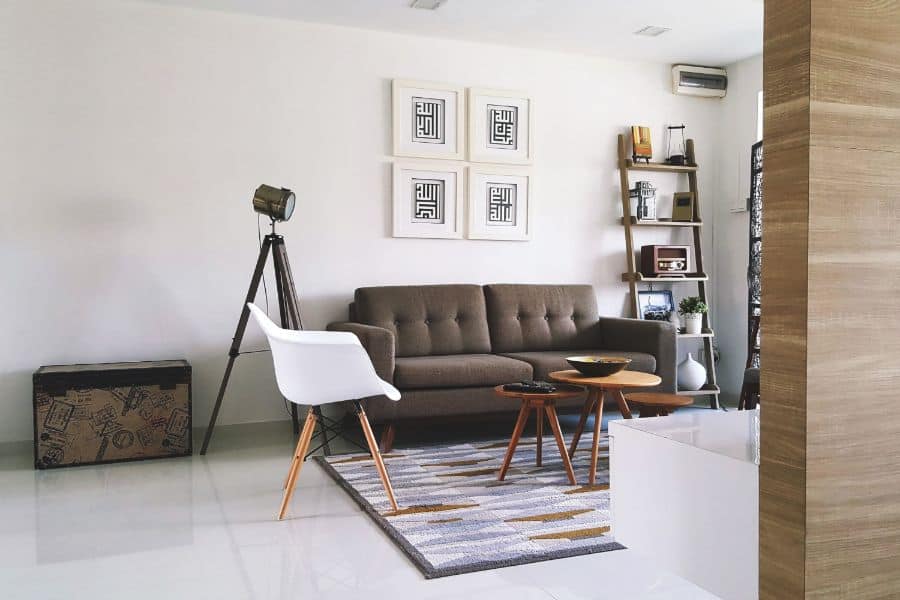
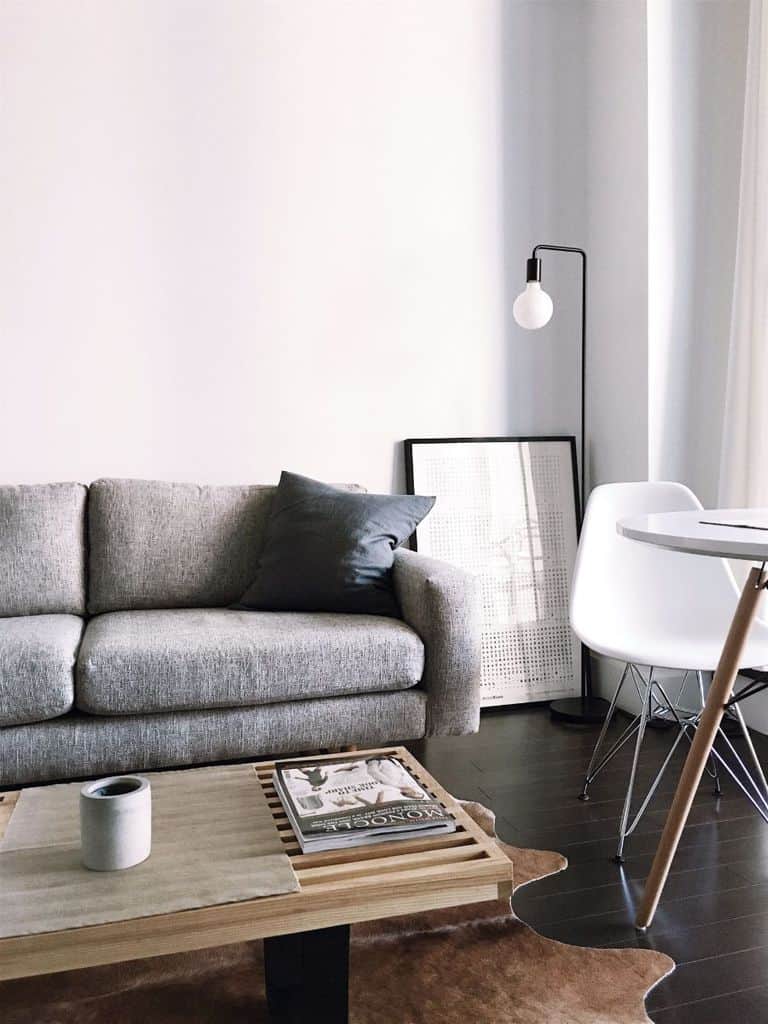

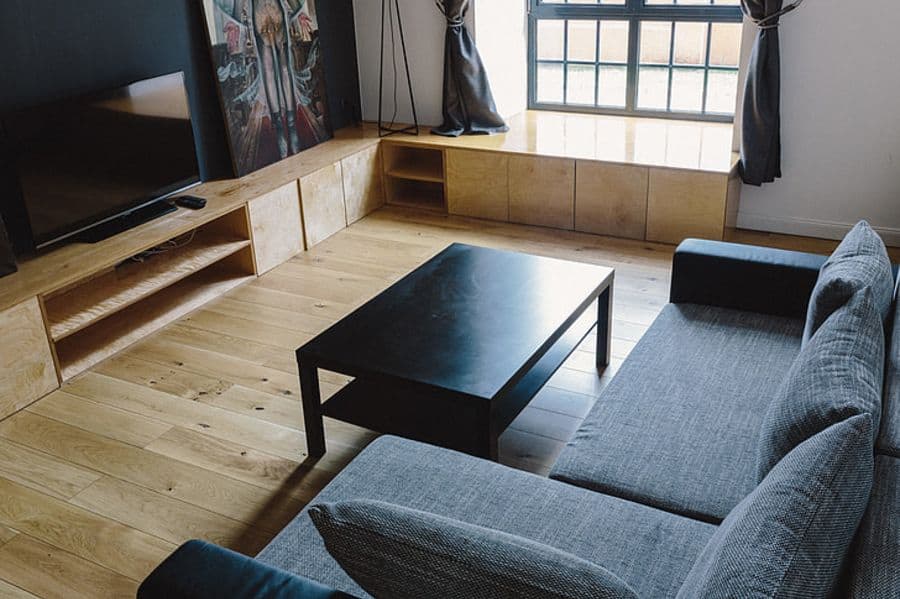
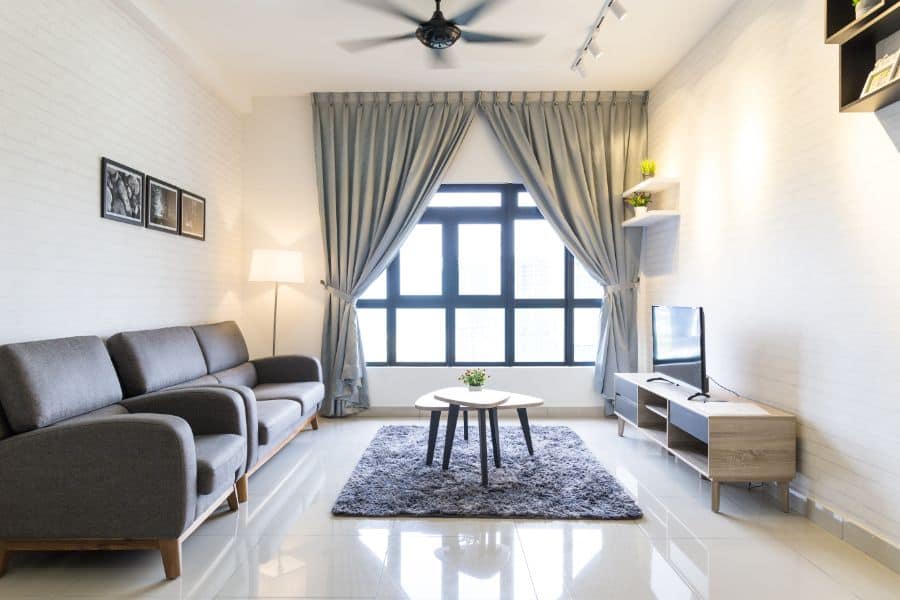
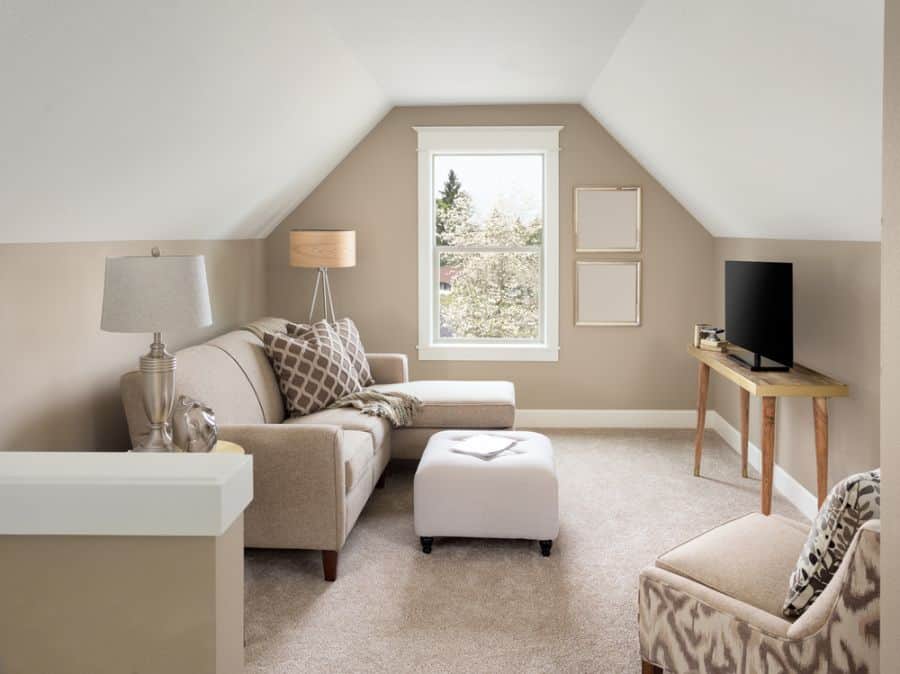
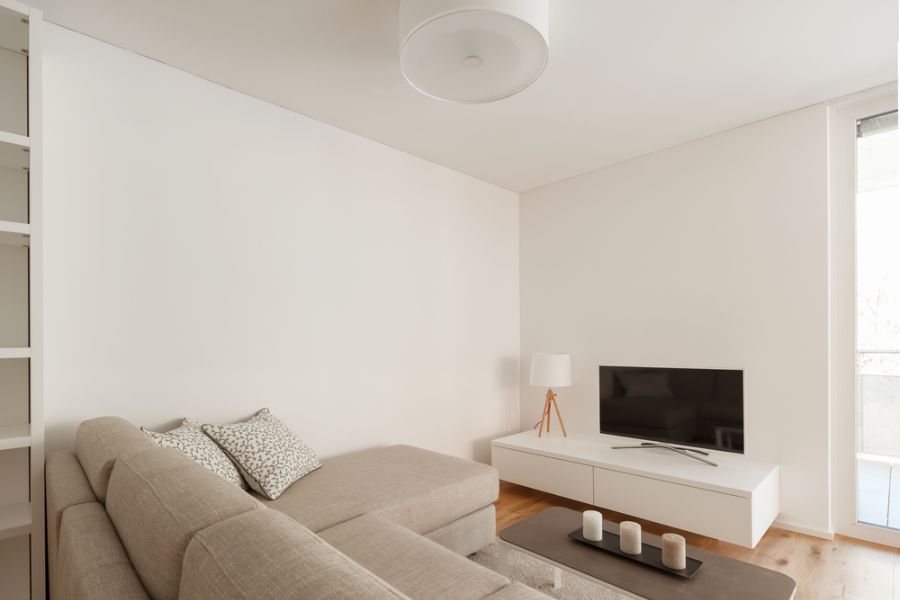



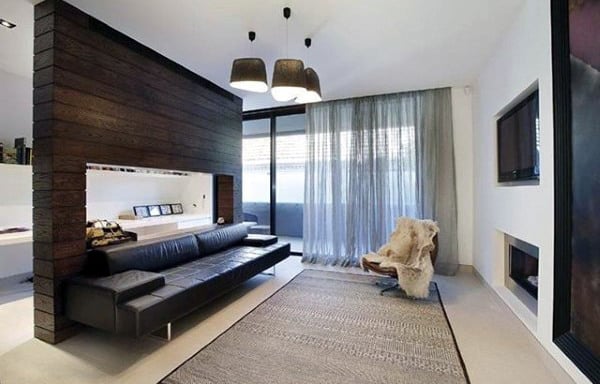
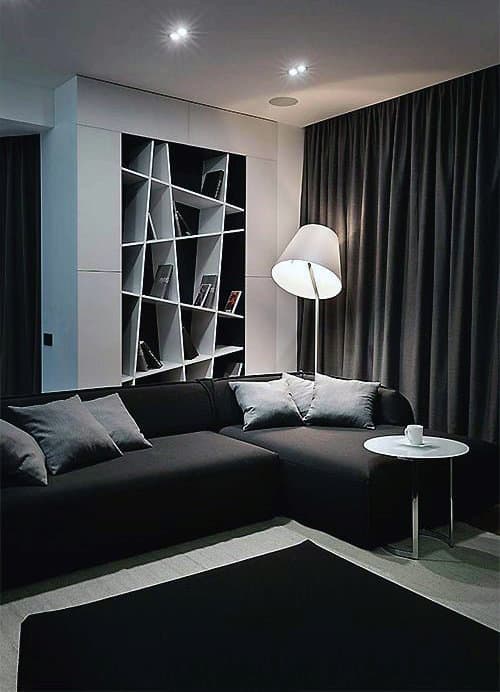
8. Contemporary Flair for Modern Homes
Modern decor, not to be confused with contemporary, emerged at the turn of the 20th century. It still remains a great option for styling a chic living room. It’s a middle ground between Scandinavian and industrial design, with an emphasis on simplicity and functionality. If anything in the room doesn’t have an obvious purpose, you should remove it from sight.
Metal accents are a great addition to any modern living room. Whether you go for brass, copper, or rose gold, make sure you stick to one finish so the room looks cohesive and uncluttered. Reflective surfaces are generally present in this style, so chrome or glass would also fit right in. A black and gray color palette adds an air of sophistication, which you can soften with greenery and white accents.
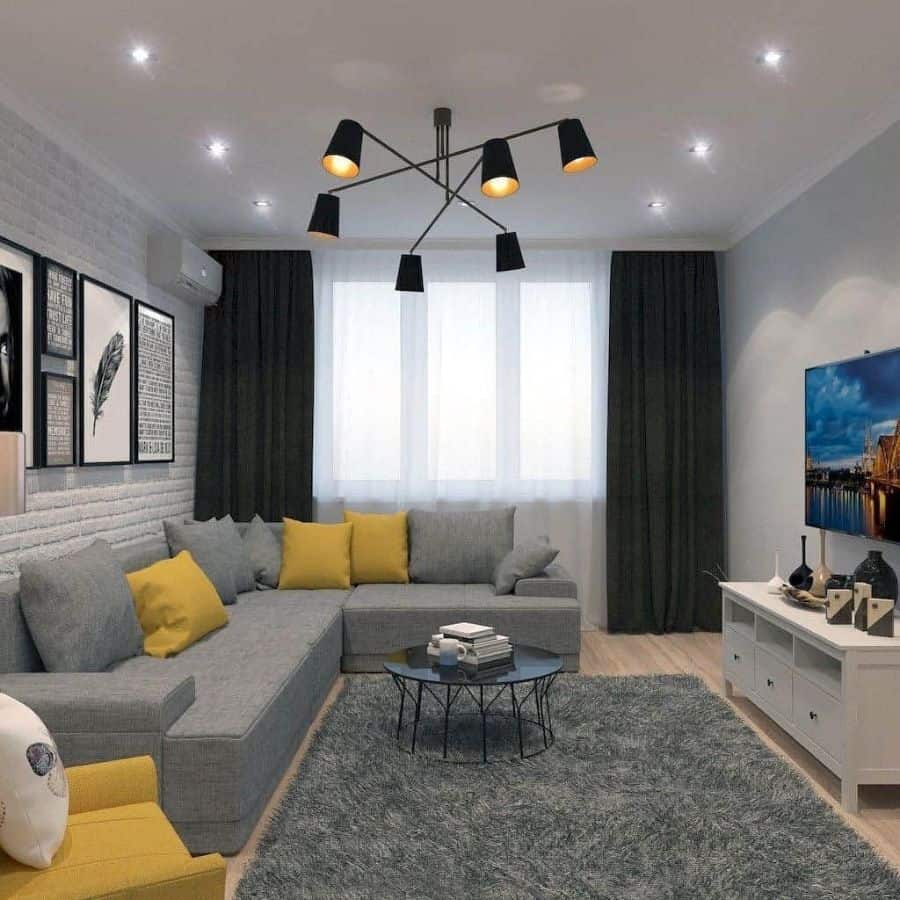
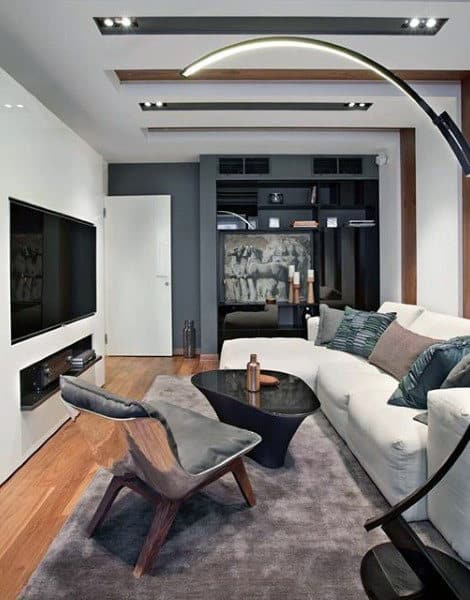
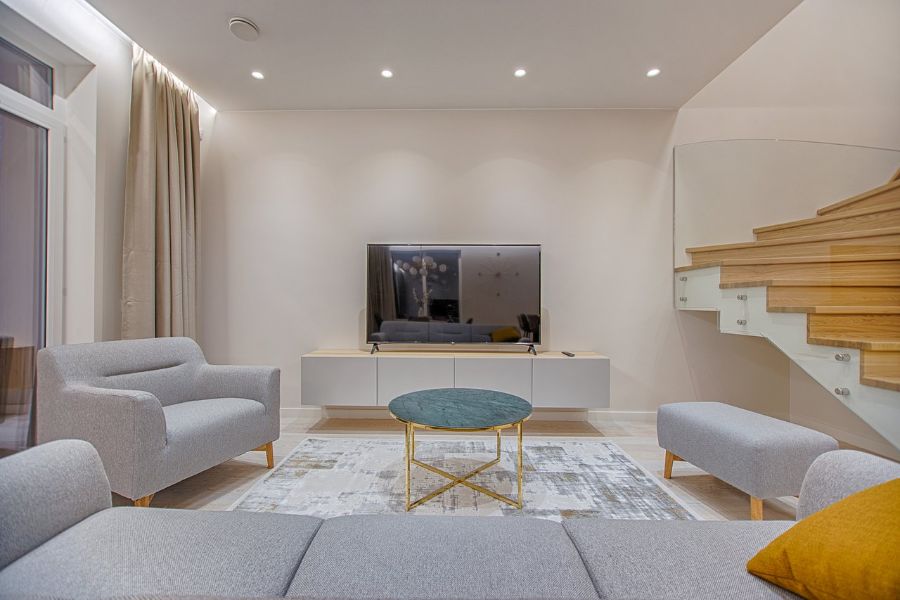
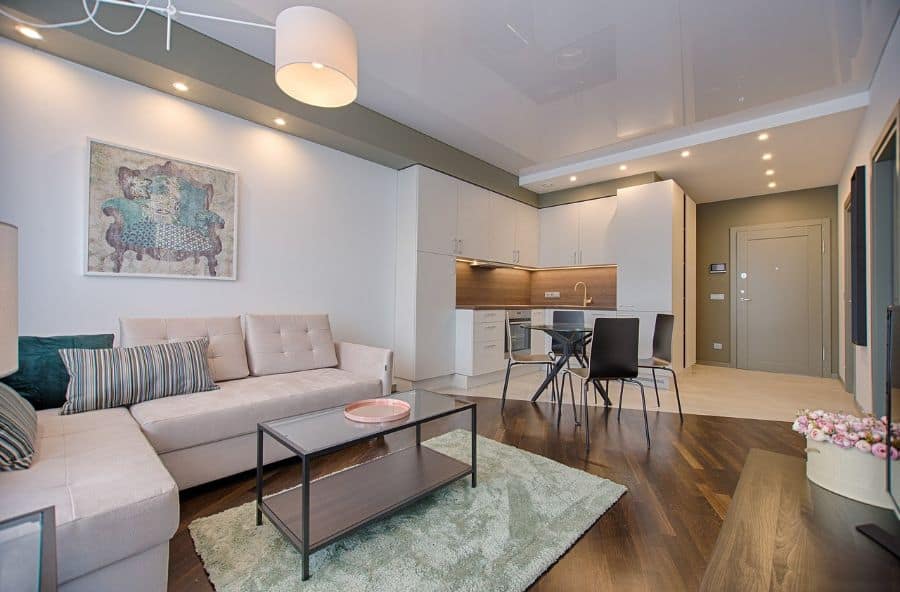
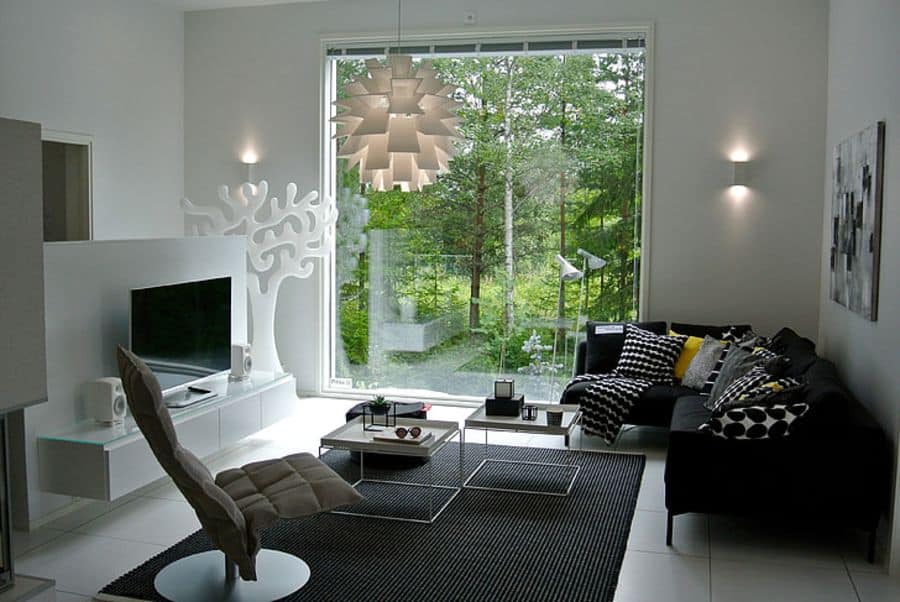
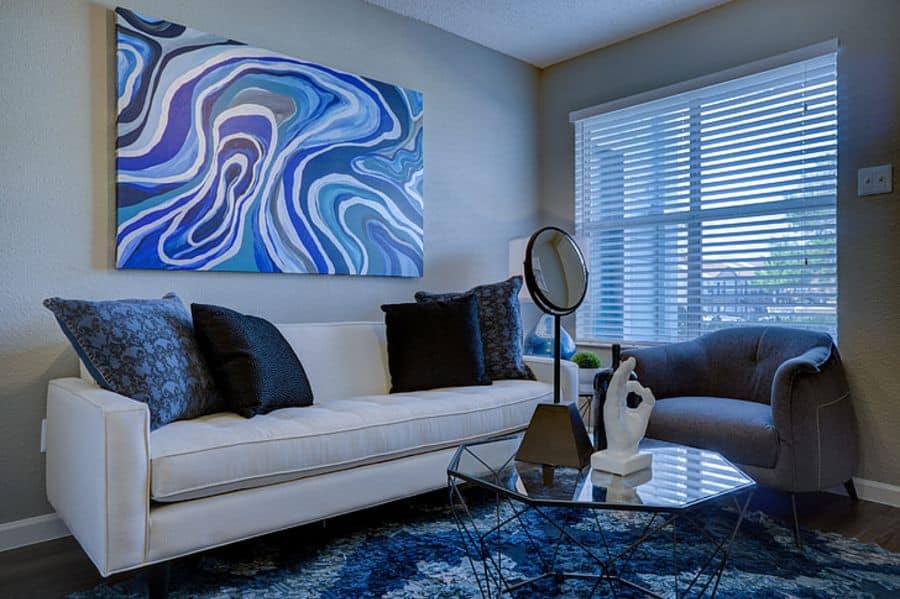
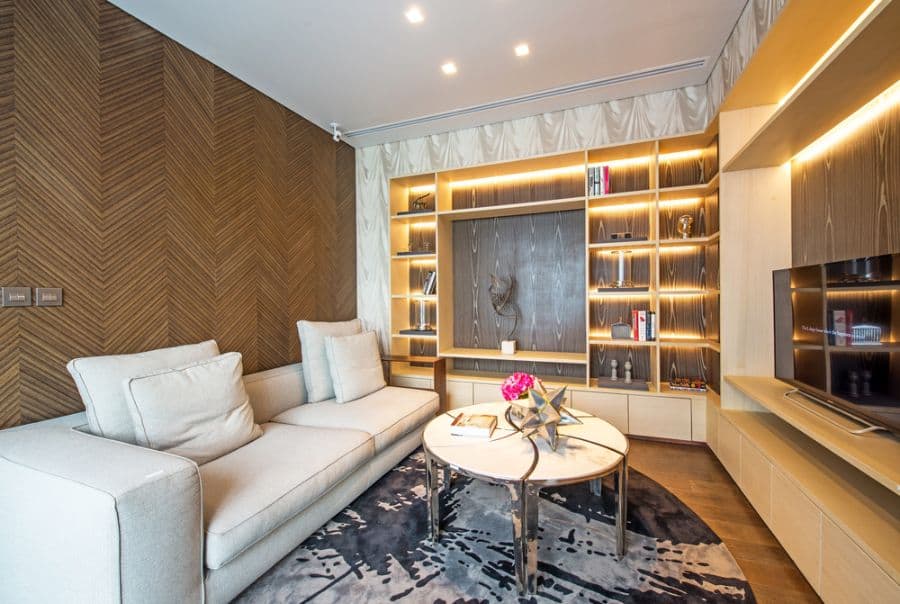

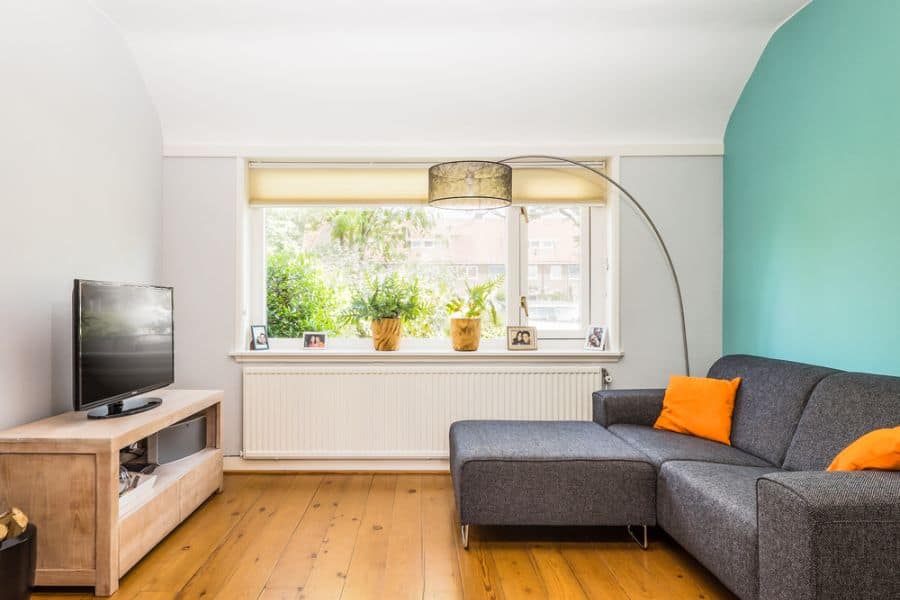
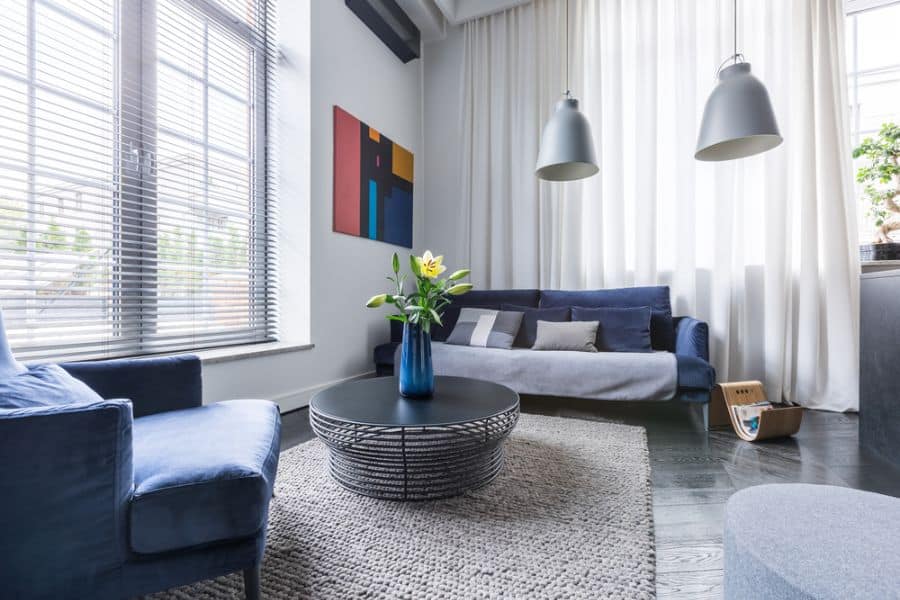
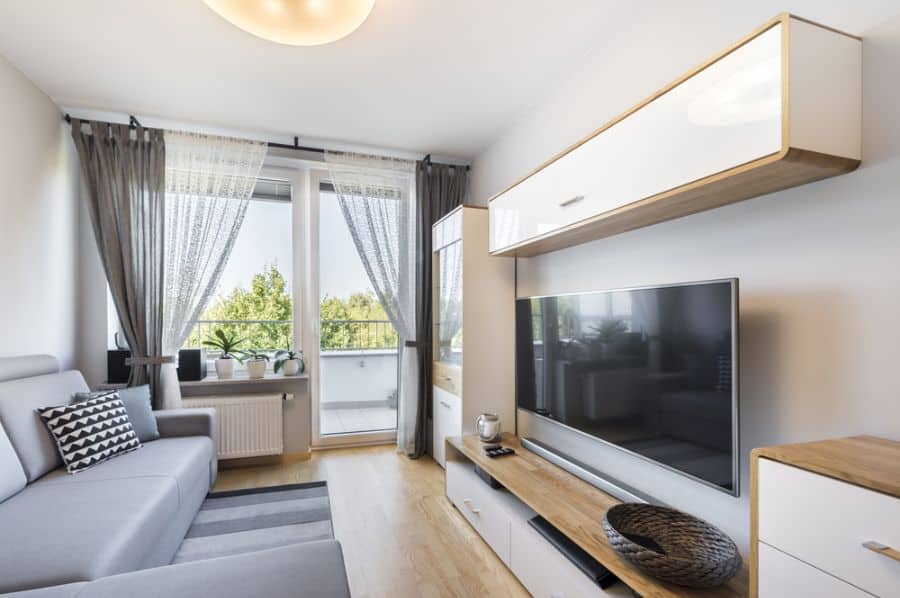
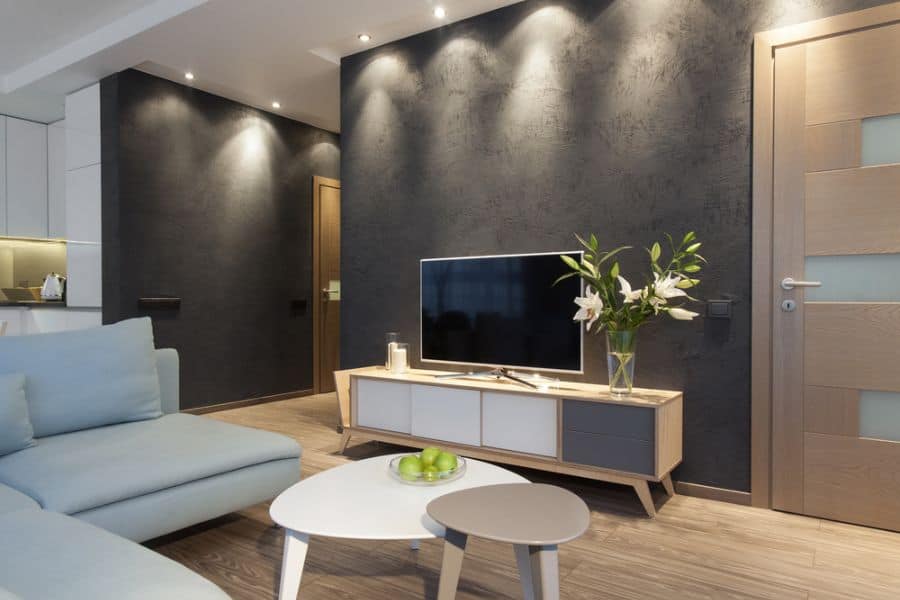
9. Timeless Elegance of Monochrome
Unifying your living room with one color creates a serene, cohesive environment. You can keep it from looking flat by bringing multiple shades into play. Put the lightest hue on the walls and incorporate the other tones through various accents like artwork, throw pillows, or furniture. Since different colors evoke different emotions, decide the mood you want to set before you dive in.
Generally, cool colors like purple and blue are relaxing, and bright colors like red and yellow are more energizing. However, you can play around with those effects by altering the tint and saturation. A paler, more muted shade of yellow will be less in-your-face than fire-engine red, and a bright turquoise will bring more energy into the space than a mellow sage green.
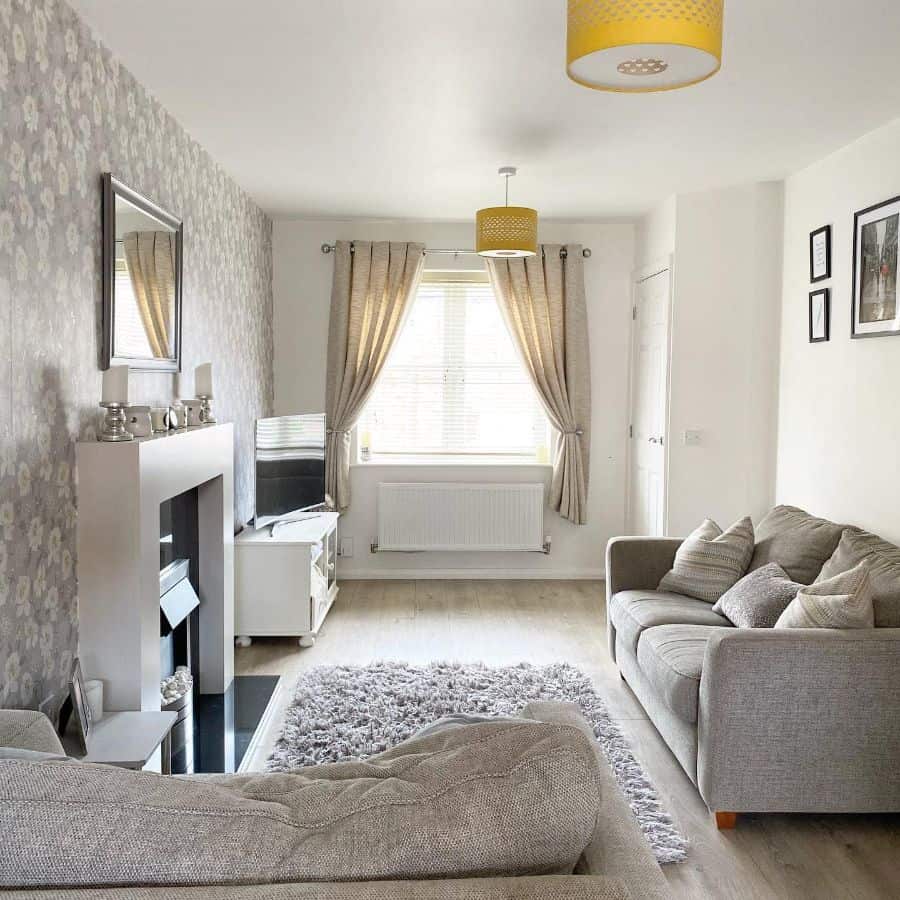
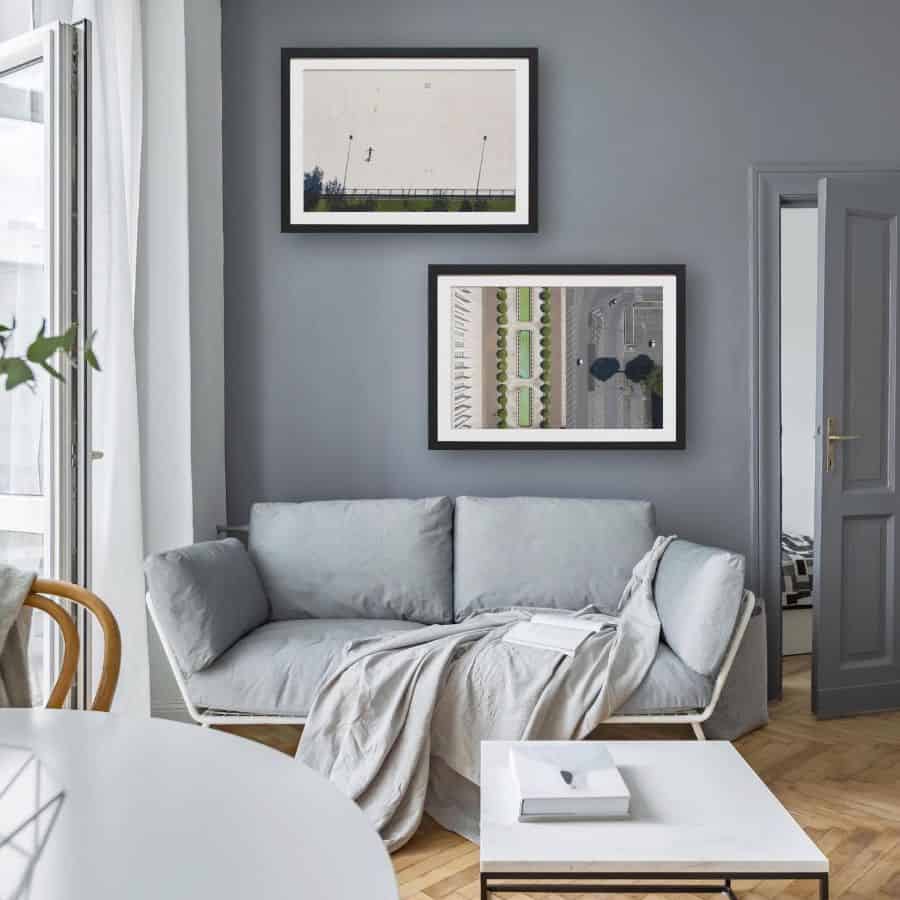

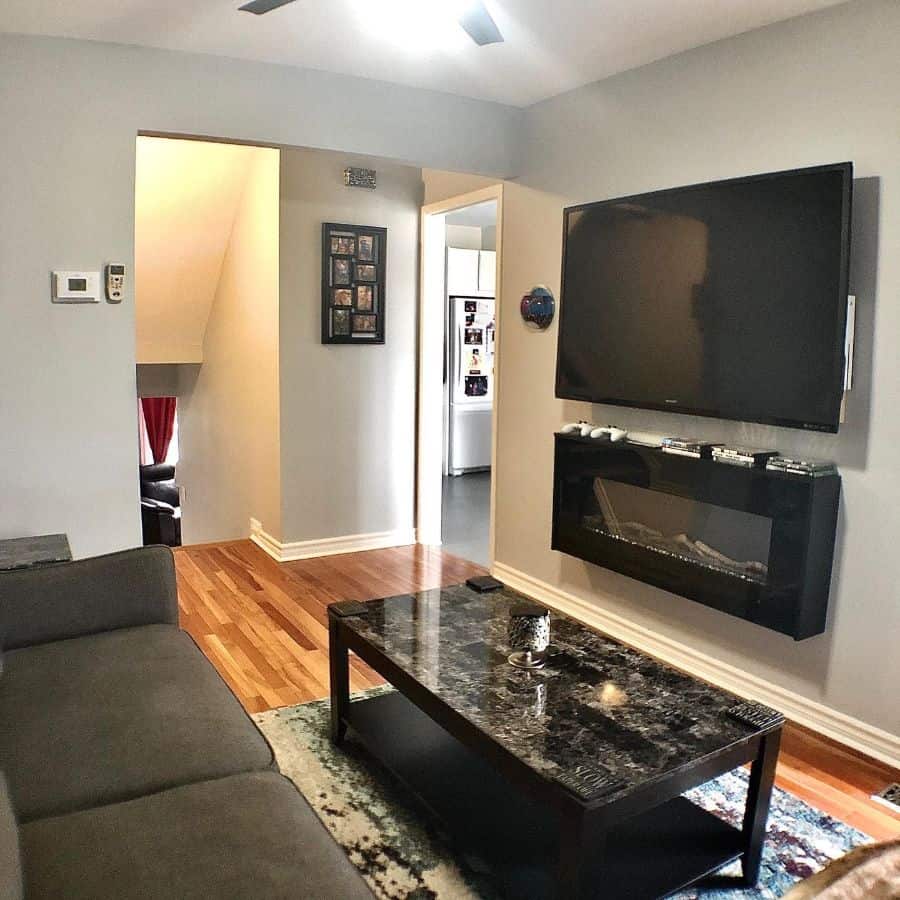

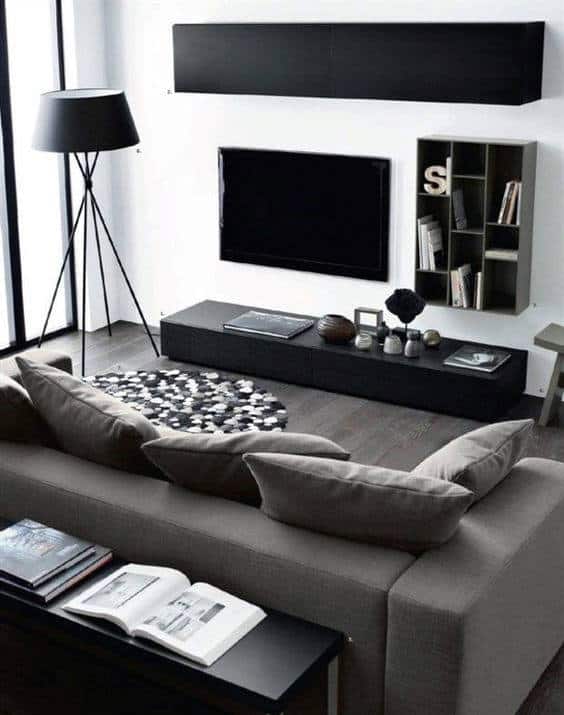

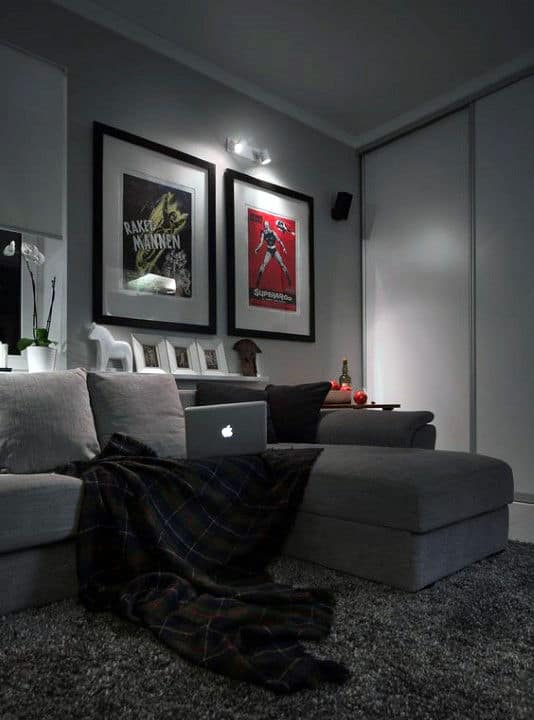

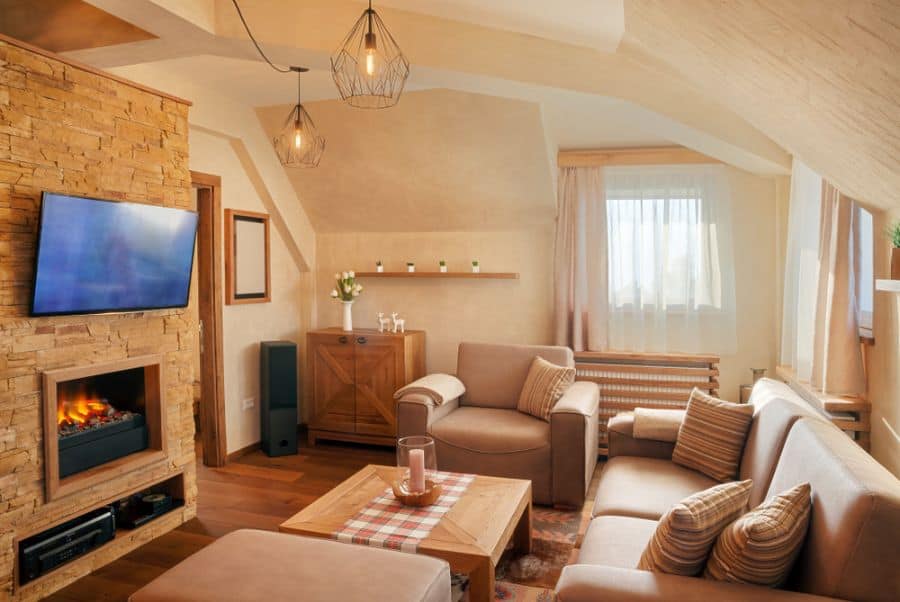
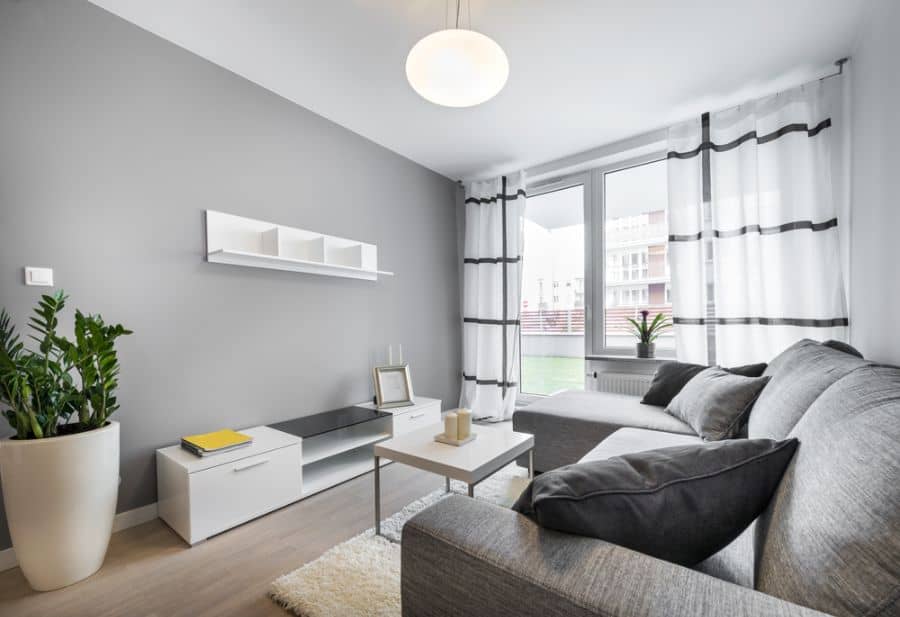
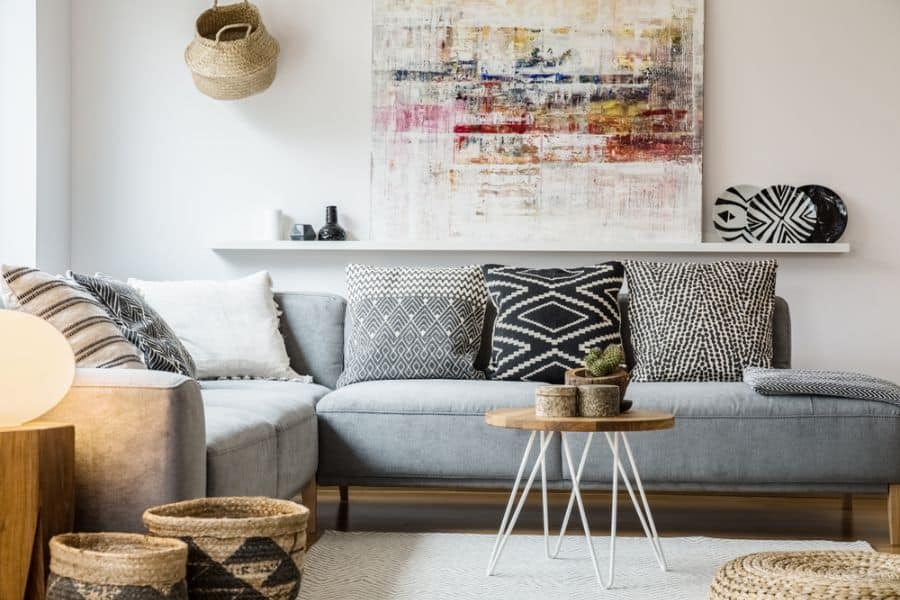
10. Seamless Flow of an Open Floor Plan
While your first instinct may be to avoid bulky furniture, too much negative space will make the room feel sparse and awkward. A big sectional sofa will fill the space and make it feel larger. An L-shaped couch could help identify the boundary between the living room and the adjacent area. For the rest of the furniture, go for lightweight pieces that complement the couch without filling the entire floor.
You’ll want to keep the color scheme of the entire open floor plan somewhat cohesive. But, you can differentiate the living room from the rest of the space through materials and textures. A leather couch, woven wall tapestry, or fluffy shag rug all stand out and signal the living room as a place to sit back and relax.
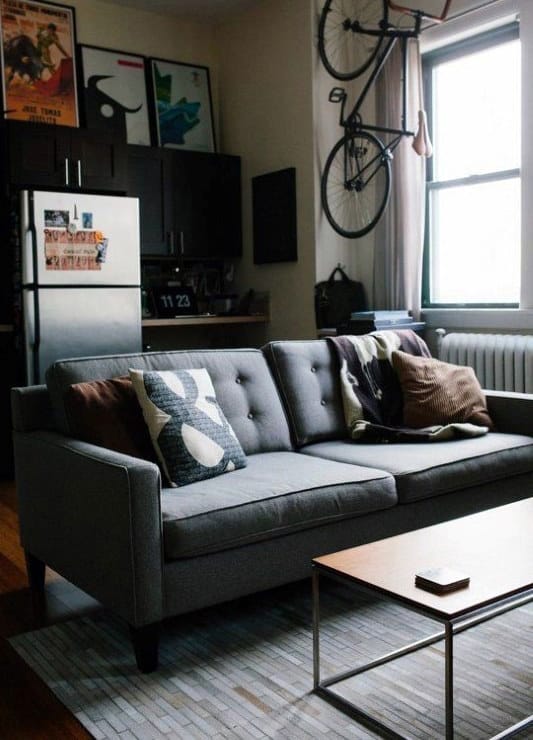


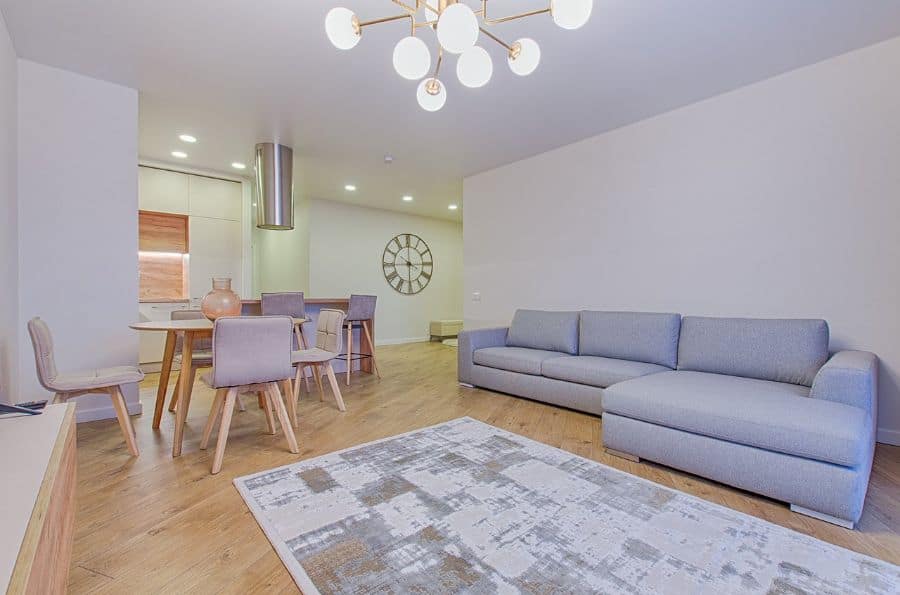



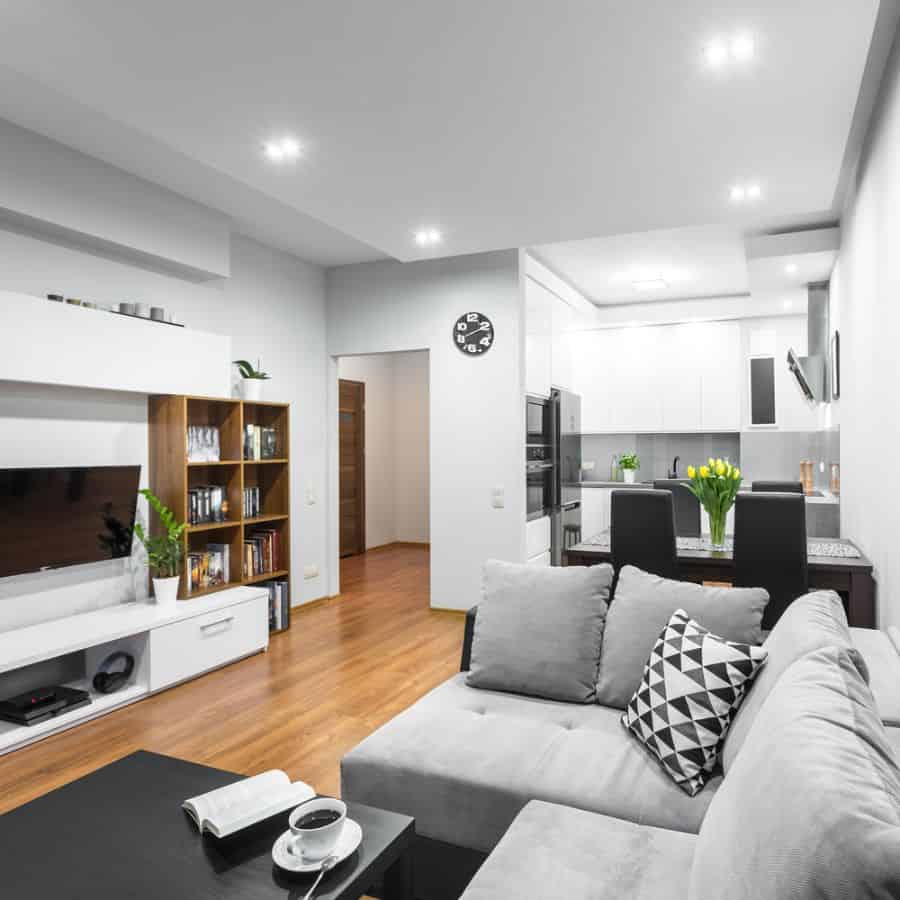


11. Scandinavian Designs for Small Living Rooms
That airy, all-white design that comes to mind when you think of minimalism has a name: Scandinavian. Minimalism is a big part of the Scandinavian aesthetic, along with an emphasis on functionality and light colors. Keep unnecessary clutter hidden and make the most of whatever natural light you have. Sheer curtains let you soften the light that enters without blocking it.
Scandinavian design also embraces natural elements. If you lucked out with wood flooring, don’t cover it up with a rug. Add other wood furniture and accents, all in the same shade to prevent visual clutter. Plants and natural fibers like jute are great ways to add character and strengthen that outdoorsy atmosphere.
While minimalism allows for freedom with color, Scandinavian interiors are always neutral. They’re typically white, with pops of black, gray, or tan. If you want to liven things up with some color, try a pale, nature-inspired gray-blue or sage green.


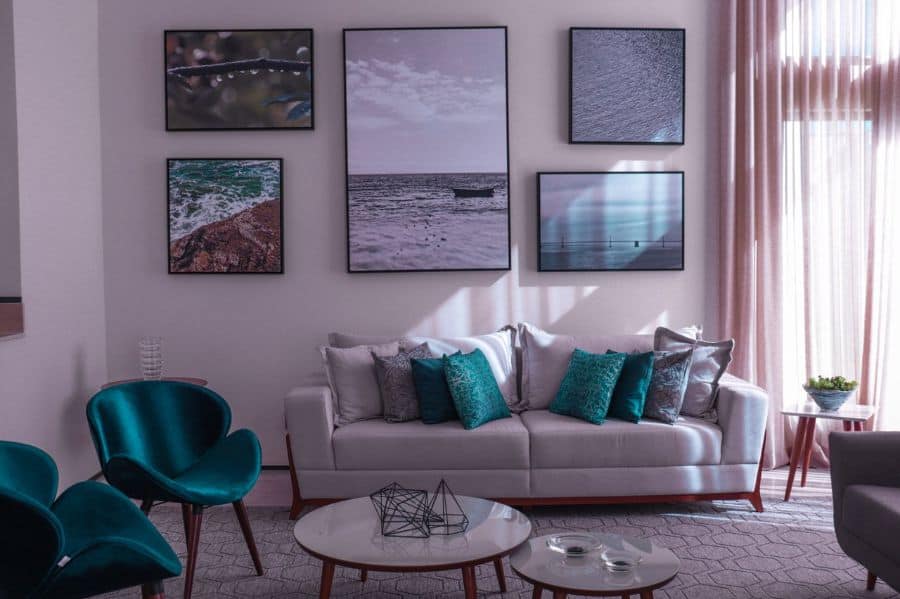
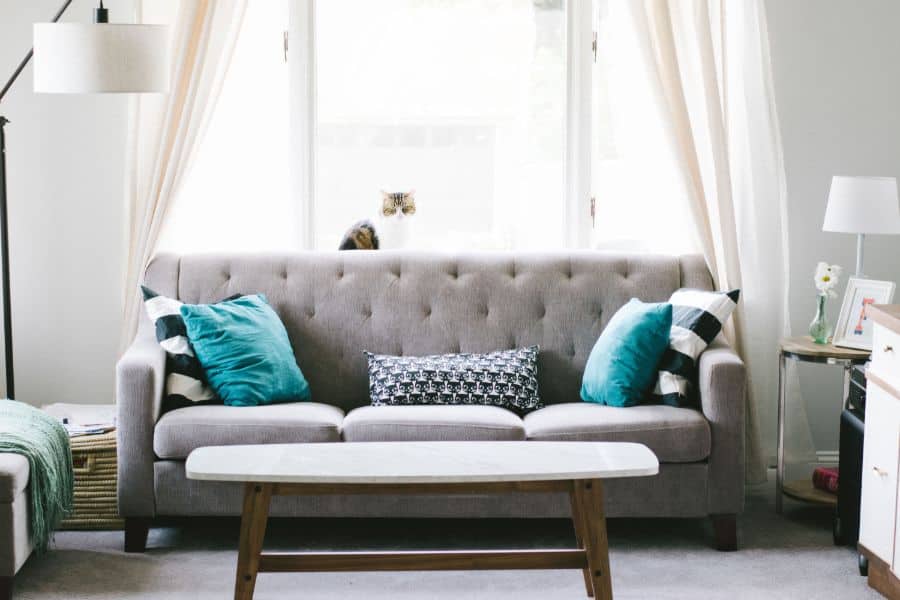


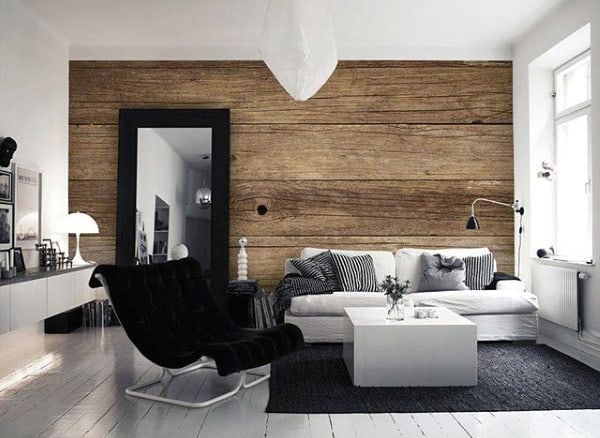
12. Creative Solutions for Small Spaces
Putting together a living room can be especially challenging in a studio apartment, given the limited space and open concepts. Different areas tend to flow together, and it can be hard to pinpoint where the living room should begin. Laying down a rug or putting up a room divider like a bookshelf can help delineate the boundary and make the living room feel like its own space.
Since a living room might have to play different roles throughout the day, look for furniture that you can change to suit your needs. A taller coffee table provides a place to set drinks and laptops during the day. It can also be a good place to eat breakfast if you don’t have space for a separate dining room. A daybed works as a roomy sofa throughout the day and a comfortable, space-saving place to sleep at night.
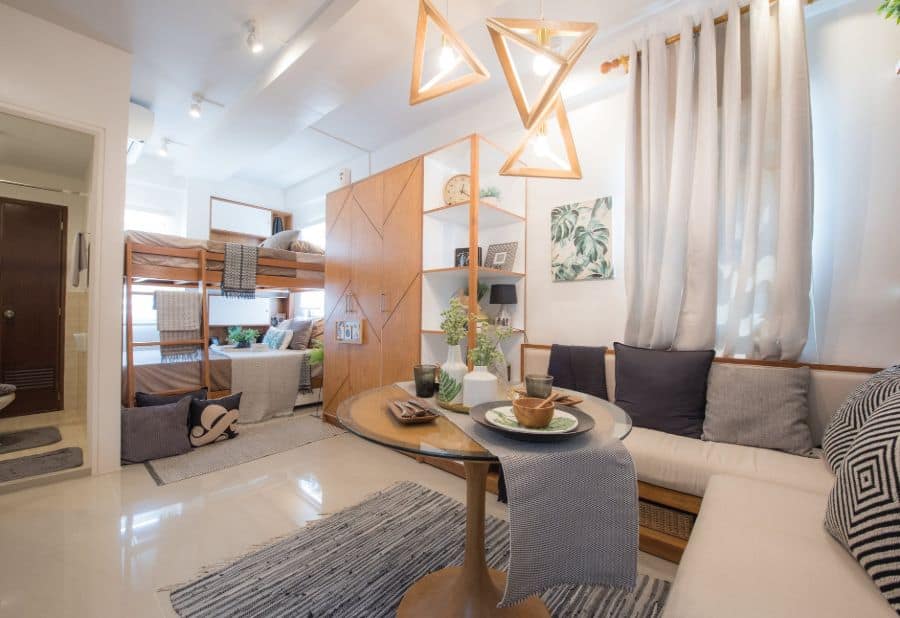
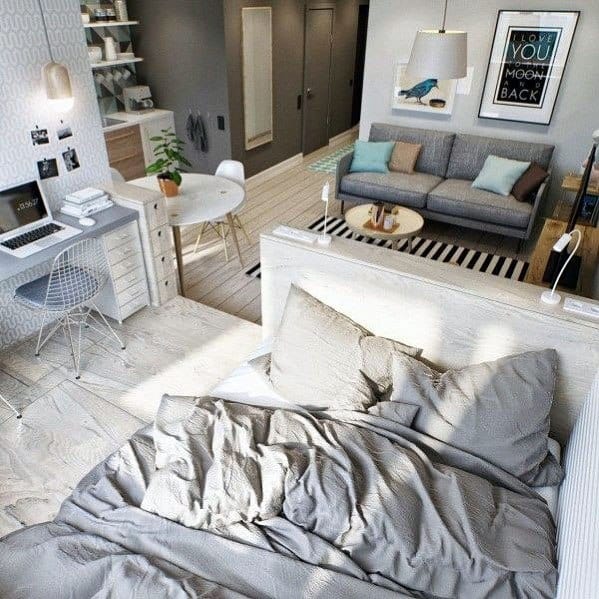
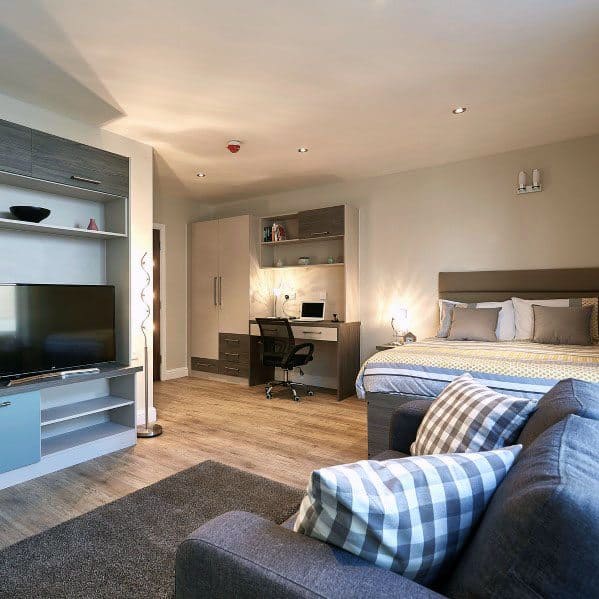
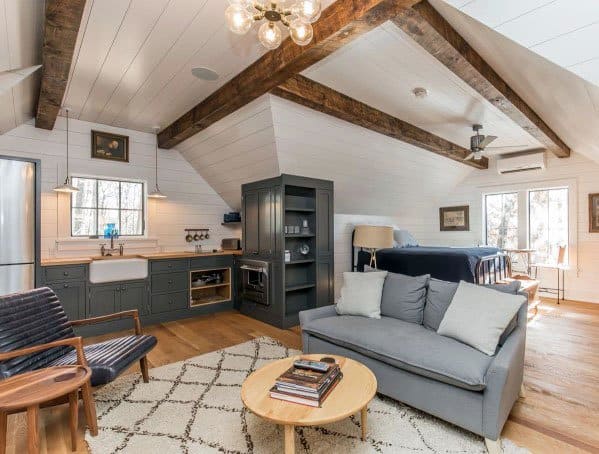
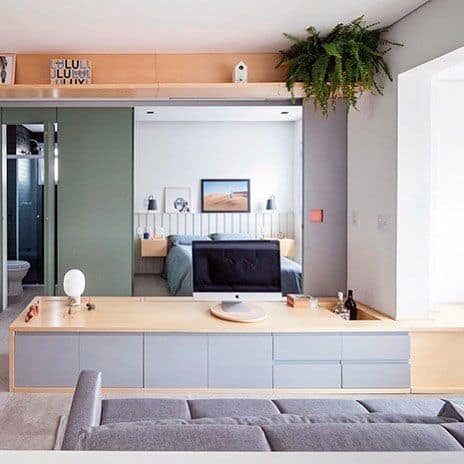
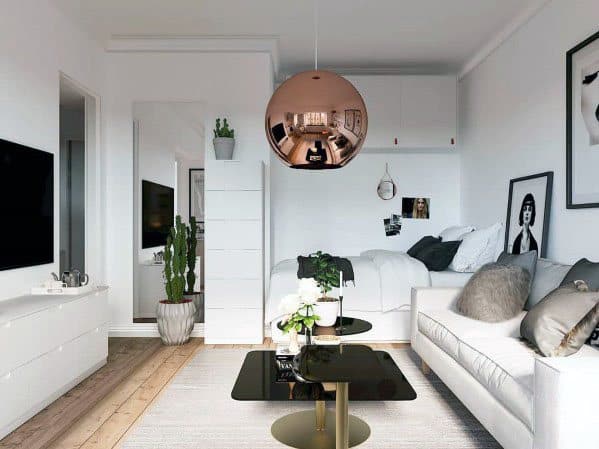
13. Bright and Airy White-Themed Inspiration
A bright white interior might be just the thing to open up your small living room. As with any monochromatic style, it allows the gaze to move easily across the space without interruption from other colors. If an all-white theme leaves your room looking flat, look for interesting textures. Woven, quilted, or shaggy materials can all work together to liven it up a bit.
While bone-white can be a bit harsh, an off-white paint job softens the effect and warms up the room. You can also break up the white with strategic pops of color. Greenery breathes life into the space and transforms a stark interior into a relaxing, spa-like atmosphere. Tan and light blue also work well and you can incorporate them as subtly or boldly as you’d like. Play it cool with an area rug, or make a statement with an ice-blue sofa and coordinating artwork.
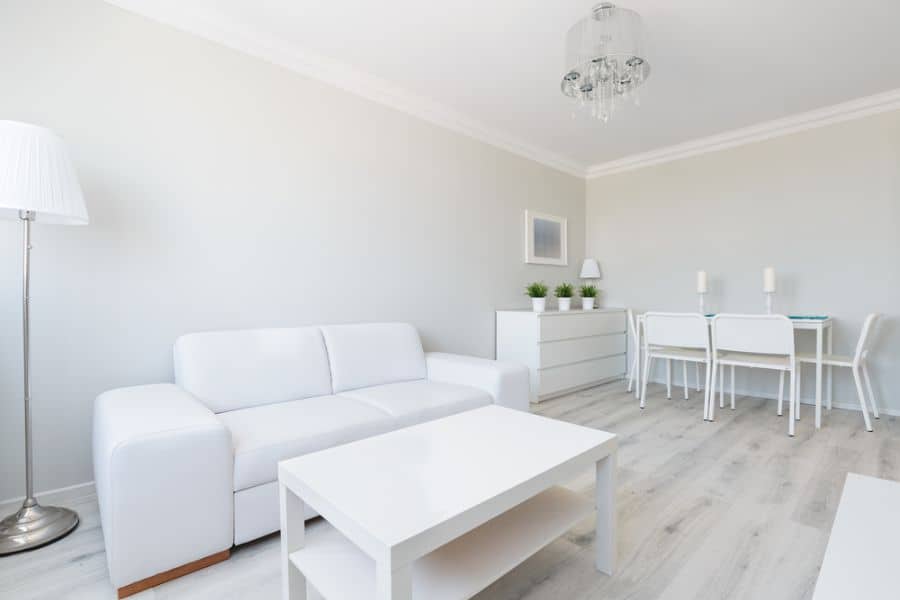
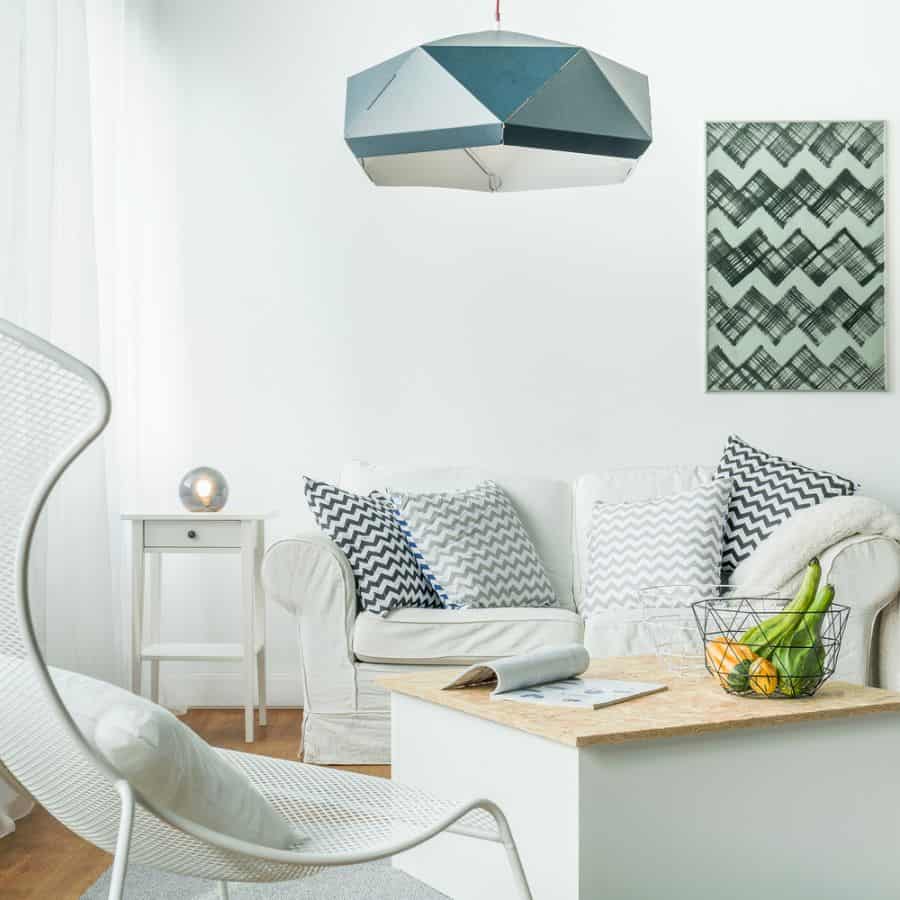

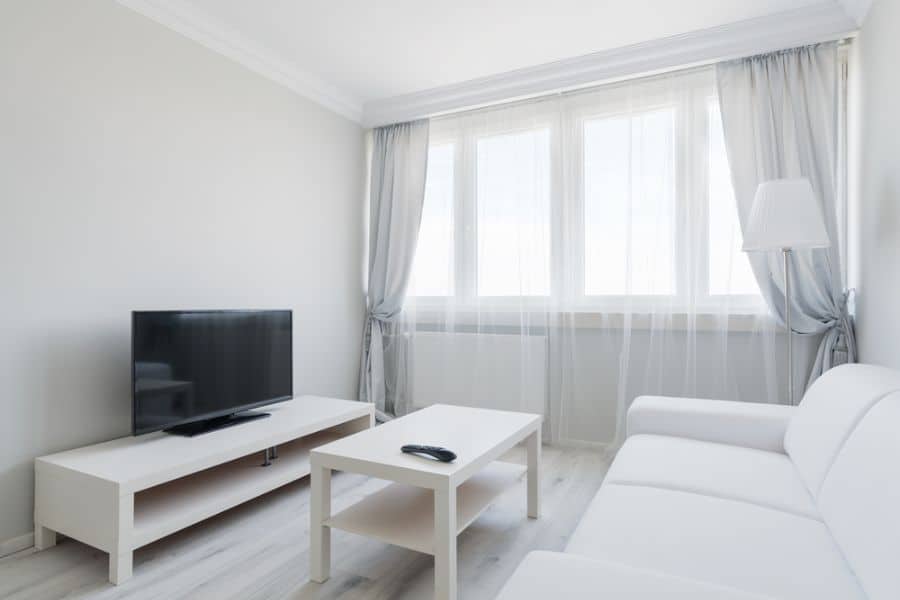
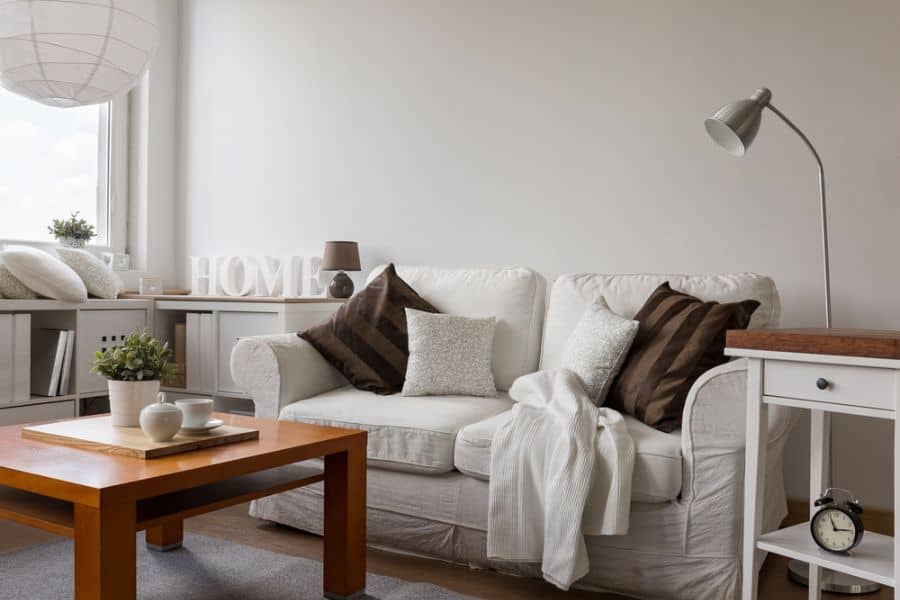
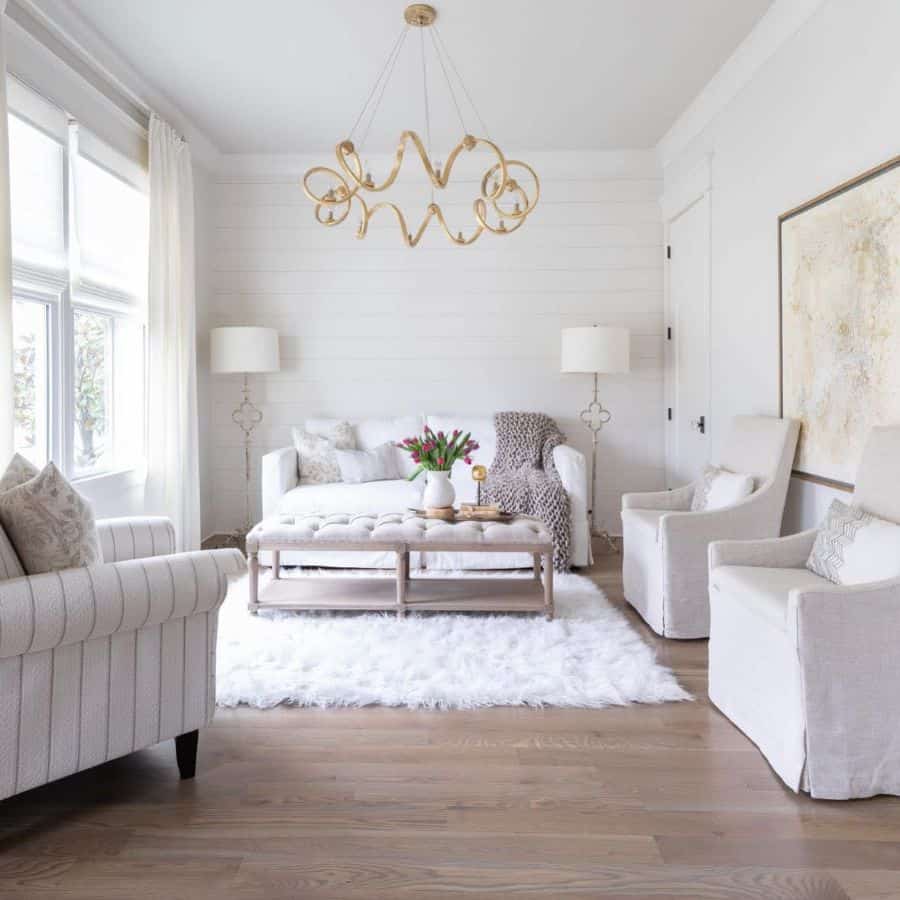
See more about - The Top 70 Minimalist Living Room Ideas
Small Living Room FAQs
What colors make a small room look bigger?
Since dark colors absorb light and make a room feel cramped, light shades are your best bet. Off-white, light green, or pale blue are all great options for tricking the eye into seeing your living room as bigger than it really is.
How do I organize my small living room?
Try to avoid awkward shuffles and maneuvers by maintaining a clear pathway between the living room and adjacent areas. Small spaces are extra susceptible to feeling cluttered. Look for baskets that blend in wherever you place them to add storage space and simplify the room.
How can I decorate my small living room?
Hanging curtains near the ceiling instead of right above windows draws the eye upward, making your walls look taller—just make sure the bottoms of the curtains reach the floor or end just above it. Mounting things like floating shelves, lighting, or guitar hooks on your walls can free up floor space while adding character to the room.



